
MARK
PAUL










MARK
PAUL








I am pleased to introduce this year’s magazine Driving Innovation.
At Michigan, we strive to push the boundaries of Civil and Environmental Engineering and redefine how our field serves society. Our efforts are guided by five core areas of our Strategic Vision: Improving Human Habitat Experience, Shaping Resource Flows, Adaptation, Automation and Data-Driven Innovation. In this edition, we not only celebrate the accomplishments of our faculty but also highlight the groundbreaking research driving the future of civil and environmental engineering within these key areas.
We are especially excited to announce the launch of a new graduatelevel specialization: Hazards, Risks and Resilience. Building on CEE’s expertise in natural hazards such as hurricanes, landslides, earthquakes, floods and wildfires, this program is designed to equip students with a deep understanding of the mechanics of hazards while also introducing advanced concepts in risk assessment and management. This initiative reflects CEE’s commitment to addressing both today’s pressing challenges and those of the future, ensuring our students are prepared to mitigate risks and enhance resilience in the face of evolving environmental and societal demands.
This year, our department continues to grow with the addition of three new tenure-track faculty members: Rabab Haider, Jiaqi Li and Seth Guikema.
Rabab Haider’s research, which sits at the intersection of energy systems, sustainability and advanced control and computational techniques, strengthens CEE’s Intelligent Systems Group and aligns with our strategic focus on Automation and Data-Driven Innovation. Jiaqi Li is focused on developing transformative materials and systems for sustainable and scalable geochemical energy cycles, helping to achieve net-zero emissions and foster a circular carbon economy—further supporting our vision for Shaping Resource Flows. Additionally, we are thrilled to welcome Seth Guikema, who transitions to CEE from Industrial and Operations Engineering. His expertise in risk management, civil and environmental engineering and urban planning will be pivotal in leading our newly established Hazards, Risks and Resilience specialization. We look forward to the fresh perspectives and impactful contributions each of these talented individuals will bring to our department.
8 Bridge In A Box: Unlocking Origami’s Power To Produce Load-Bearing Structures
As you read through this edition, I am confident you will experience the same pride and inspiration I feel from the stories of excellence across our department and community. I look forward to embarking on another year with all of you, and I am eager for the continued success and innovation this year will bring.
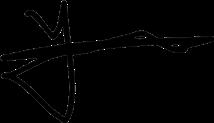
Yafeng Yin, Ph.D.
Donald
Cleveland Collegiate Professor of Engineering
Donald Malloure Department Chair of Civil & Environmental Engineering
University of Michigan, Ann Arbor

ENVIRONMENTAL ENGINEERING UNDERGRADUATE PROGRAM



ENVIRONMENTAL ENGINEERING GRADUATE PROGRAM
CIVIL ENGINEERING GRADUATE PROGRAM #4 #2 #5

CIVIL ENGINEERING UNDERGRADUATE PROGRAM





47 Faculty Members Student to Faculty Ratio Years as Department

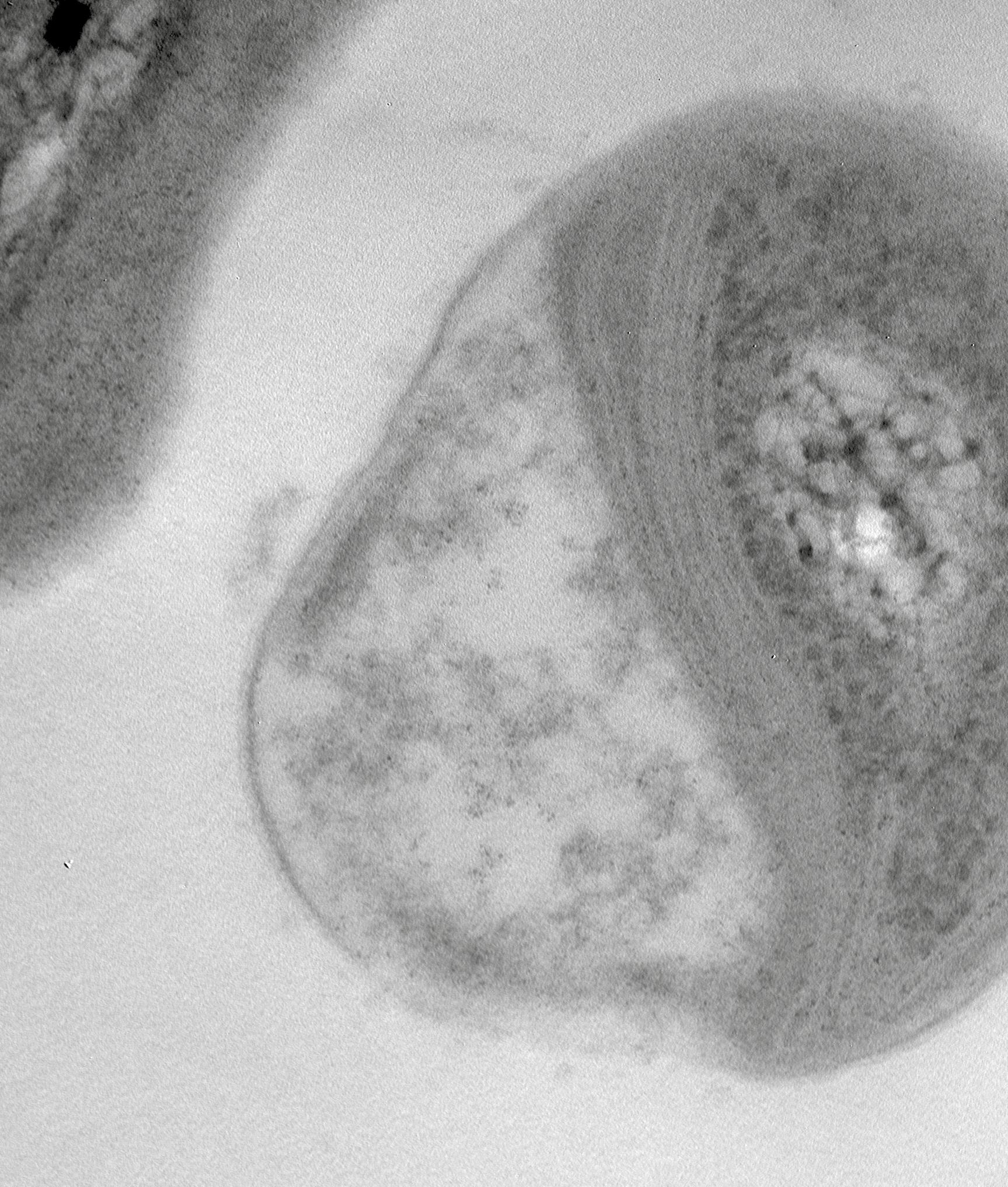


STORY BY MASON HINAWI
A unique avenue of scientific research at U-M CEE has led to a promising new therapy for Wilson’s Disease. Propelled by U-M CEE Professor Jeremy Semrau’s curiosity about methane-consuming bacteria—known as methanotrophs— the investigation has revealed potential medical applications previously unforeseen.
Methanotrophs, microorganisms found in a variety of environments such as lakes and soils, oxidize methane through a controlled process. “Methanotrophs are methane-consuming microorganisms that oxidize methane and couple that to oxygen,” explained Semrau. He initially studied these microbes as they are critical players in controlling the emission of methane, a very potent greenhouse gas. Semrau and his colleague at Iowa State University, Alan DiSpirito, discovered that a key component regulating methanotrophic activity was a copper-binding compound called methanobactin.
The discovery of methanobactin’s properties sparked an unexpected shift in Semrau’s research.“We understood that methanobactin bound copper very strongly, and that’s when we went off in this right turn,” he recounted. The medical potential of methanobactin came to light when collaborating with German researcher Hans Zischka from Helmholtz Zentrum München, who proposed its use for treating Wilson’s Disease, a rare genetic disorder causing toxic copper accumulation in the liver.
Today’s FDA-approved treatments for Wilson’s Disease require daily dosages, which are not only costly but also come with significant side effects, often leading to compliance issues. Recent studies conducted by Semrau and other researchers have demonstrated that a form of methanobactin (now called
ARBM101) can eliminate liver copper in rats within eight days, significantly reducing the need for continuous treatment. “It quickly and efficiently prevents the damage the rats would have otherwise experienced,” affirmed Semrau.
To bring this research closer to clinical application, Semrau and his collaborators from Iowa State University and Helmholtz Zentrum München have several patents awarded for use and production of methanobactin as well as many others in review. Some of these patents have been licensed to Arbormed, a pharmaceutical startup. The company is currently conducting expanded toxicology studies to pave the way for human trials. Achieving scalable production was a major advancement, as the original bacterial strain produced methanobactin at low rates and only in the presence of methane. Semrau and his team engineered an alternative methanotroph to produce much more methanobactin using methanol, an inherently safer compound than methane.
In the future, instead of lifelong daily medication, Wilson’s Disease patients could potentially receive periodic methanobactin treatments followed by extended breaks. “You go to the doctor’s office, you get an injection, and then you can have a two-month holiday,” envisioned Semrau, highlighting the significant improvement in patients’ quality of life this treatment could offer.
This journey from environmental research to medical application underscores the transformative potential of fundamental scientific inquiries. The work conducted on methanotrophs and methanobactin has opened new pathways for treating Wilson’s Disease, offering a hopeful outlook for patients and their families.
STORY BY JIM LYNCH
For the first time, load-bearing structures like bridges and shelters can be made with origami modules—versatile components that can fold compactly and adapt into different shapes—University of Michigan engineers have demonstrated.
With both the adaptability and load-carrying capability, our system can build structures that can be used in modern construction.”
-Evgueni Filipov, Associate Professor of Civil & Environmental Engineering
It’s an advance that could enable communities to quickly rebuild facilities and systems damaged or destroyed during natural disasters, or allow for construction in places that were previously considered impractical, including outer space. The technology could also be used for structures that need to be built and then disassembled quickly, such as concert venues and event stages. “With both the adaptability and load-carrying capability, our system can build structures that can be used in modern construction,” said Evgueni Filipov, an Associate Professor of Civil & Environmental Engineering and of Mechanical Engineering, and a corresponding author of the study in Nature Communications.
Principles of the origami art form allow for larger materials to be folded and collapsed into small spaces. And with modular building systems gaining wider acceptance, the applications for components that can be stored and transported with ease have grown.
Researchers have struggled for years to create origami systems with the necessary weight capacities while keeping the ability to quickly deploy and reconfigure. U-M engineers have created an origami system that solves that problem. Examples of what the system can create include:
A 3.3-foot-tall column that can support 2.1 tons of weight while itself weighing just over 16 pounds, and with a base footprint of less than 1 square foot.



A package that can unfold from a 1.6-foot-wide cube to deploy into different structures, including: a 13-footlong walking bridge, a 6.5-foot-tall bus stop and a 13-foot-tall column.
A key to the breakthrough came in the form of a different design approach provided by Yi Zhu, Research Fellow in Mechanical Engineering and first author of the study.
“When people work with origami concepts, they usually start with the idea of thin, paper-folded models—assuming your materials will be paper-thin,” Zhu said. “However, in order to build common structures like bridges and bus stops using origami, we need mathematical tools that can directly consider thickness during the initial origami design.”
To bolster weight-bearing capacity, many researchers have attempted to thicken their paper-thin designs in varying spots. U-M’s team, however, found that uniformity is key.
“What happens is you add one level of thickness here and a different level of thickness there and it becomes mismatched,” Filipov said. “So when the load is carried through these components it starts to cause bending.”
“That uniformity of the component’s thickness is what’s key and what’s missing from many current origami systems. When you have that, together with appropriate locking devices, the weight placed upon a structure can be evenly transferred throughout.”
In addition to carrying a large load, this system—known as the Modular and Uniformly Thick Origami-Inspired Structure system—can adapt its shapes to become bridges, walls, floors, columns and many other structures.
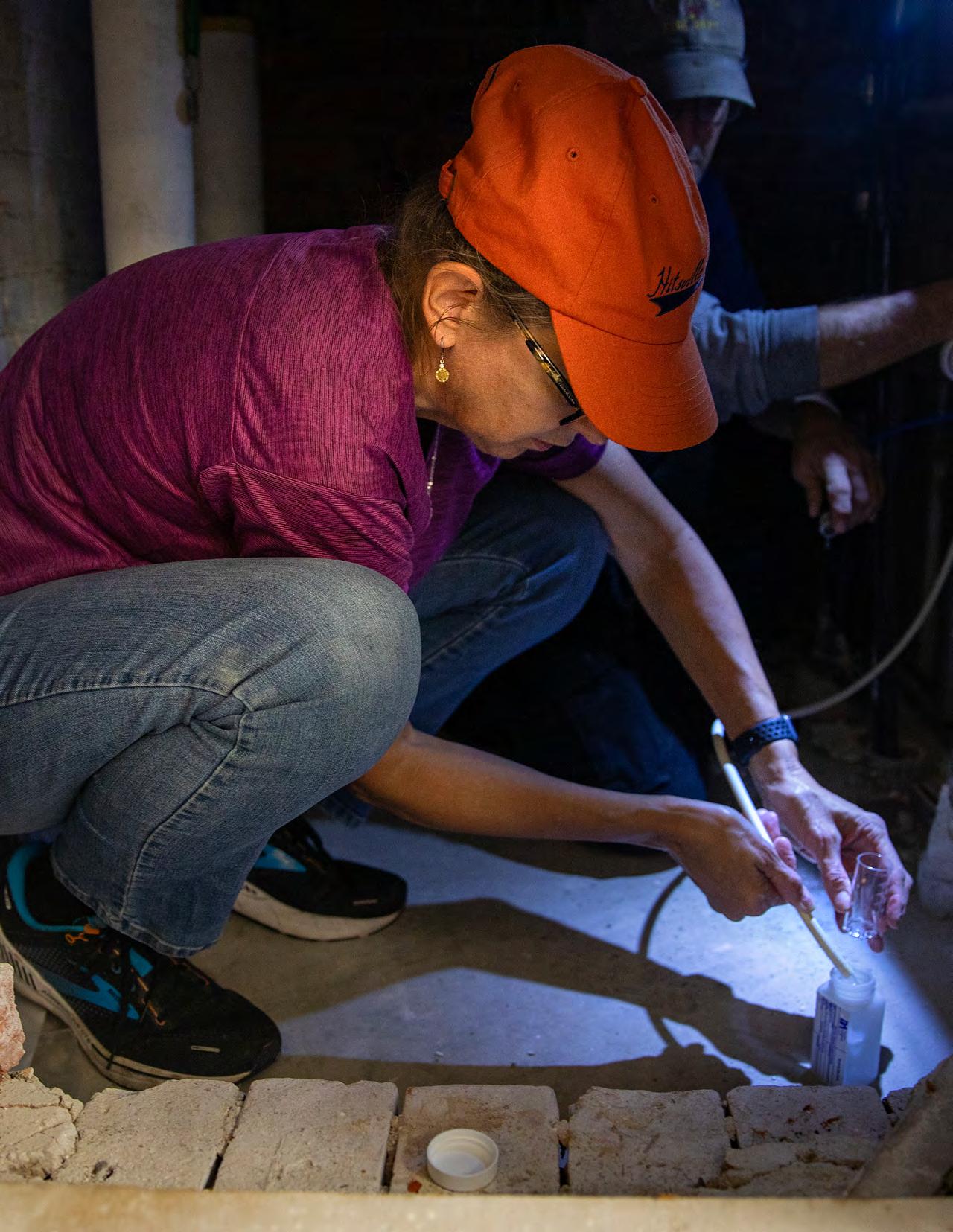

STORY BY JIM LYNCH
Flint residents have learned to question everything in the decade since the city’s drinking water first began showing signs of lead contamination. Even now, after seven straight years with water meeting federal safety guidelines, the lack of trust remains for many.
University of Michigan researchers and their partners are addressing this lingering problem on multiple fronts— from continued testing to in-school education and consulting with the city.
Nancy Love, the JoAnn Silverstein Distinguished University Professor of Civil & Environmental Engineering, leads a team that has been performing tests at Flint sites—a job she hopes one day will no longer be necessary. Even after Flint has spent years replacing lead service lines around the city—a process that is continuing—issues remain.
“We routinely measure lead in unfiltered samples above or well above 15 parts per billion,” Love said, citing the EPA action level for lead in water. “And these are buildings that no longer have lead service lines, so there’s no lead in the water coming in.
“The lead we’re finding now probably comes from things like galvanized or cast iron pipes, fixtures and lead solder that was used decades ago to repair plumbing. Unless they rip everything out of these older buildings, you can still definitely have lead in there.”
State officials have sought to address this via legislation. Late last month, Michigan Gov. Gretchen Whitmer signed a series of bills enacting Filter First legislation statewide. Schools and day care centers are now required to install water filters at drinking fountains and bottle-filling stations.
A Whitmer statement said: “In Michigan we have seen the devastating and long-lasting impact of lead exposure and we are committed to making sure no child has to suffer through this again.”
Contamination from interior plumbing is a key factor behind the hydration stations—filtered water dispensers—that debuted in Flint Community Schools early
in 2022. The project garnered headlines in 2018 with financial support from Elon Musk.
Settling on a design for the hydration stations was another hurdle, and Love served as a consultant on that project, helping to establish the performance criteria. The stations provide three levels of contaminant removal:
• Micro-membrane filters to remove particles and some bacteria
• Activated carbon designed to remove lead and other metals
• LED ultraviolet light provides disinfection
Laura Sullivan, professor of mechanical engineering at Kettering University in Flint, has been a key player in dealing with Flint’s water issues from the beginning, and serves as the point of contact with Flint Community Schools for the hydration station monitoring effort. She is working with local school students and staff on establishing monitoring and maintenance protocols.
“Flint students are more likely to trust that the hydration stations provide safe drinking water if they have a seat at the table when hydration station testing is discussed,” Sullivan said. “This experience can empower them to enhance trust in drinking water for their peers, teachers and parents.”
To help build that trust, Love turned to Justin Roelofs, a former Engineering Technician at U-M Civil & Environmental Engineering. Roelof custom-built a cart to transport a mockup of the hydration stations into Flint classrooms to show students how the technology works.
“We want to remove the mystery around water treatment and water quality at the point of use,” Love said.
Residents began to question the safety of what came out of their taps following spring 2014 when the city began drawing its drinking water from the Flint River. Soon after, there were complaints of discoloration, bad smells and bad tastes in the water. Subsequent testing of that water showed high levels of lead contamination and, soon after, Legionella
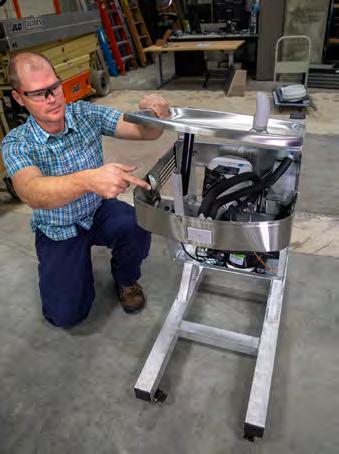
Justin Roelofs, a former Engineering Technician at U-M CEE, custom-built a cart to transport a mockup of the hydration stations into Flint classrooms to show students how the technology works.
would also become a concern. In less than two years, Flint’s crisis was known globally and residents had learned to live on bottled water.
An American Academy of Pediatrics statement warns that lead exposure at an early age can hinder brain development: “Lead toxicity results in substantial, population-level effects on children’s intellectual abilities, academic abilities, problem behaviors and birth weight.”
Love and her team continue to perform research in areas that will benefit Flint and other cities facing similar issues. Those challenges include how water quality is impacted in cities that have lost, and are losing, significant portions of their population. Distribution systems designed for a larger number of customers are now relatively oversized, which carries its own set of risks.
Love has been working in Flint for seven years with partial support from U-M’s Poverty Solutions initiative and the National Science Foundation’s Civic Innovation Challenge.
STORY BY JIM LYNCH
What this has done is really solve our data collection issue.”
-Gary Piotrowicz, Deputy Managing Director of the Road Commission for Oakland County
With GPS data from as little as 6% of vehicles on the road, University of Michigan researchers can recalibrate traffic signals to significantly reduce congestion and delays at intersections.
In an 18-month pilot study conducted in Birmingham, Michigan, the team used connected vehicle data insights provided by General Motors (GM) to test its system, resulting in a 20% to 30% decrease in the number of stops at signalized intersections. GM vehicles make up 6-10% of cars currently on the road in the United States.
Officially, it’s the world’s first large-scale, cloud-based traffic signal retiming system, and it represents a major opportunity for communities to recalibrate their signal patterns at a reduced cost. U-M’s research appears in Nature Communications.
The U-M system takes GPS data from a percentage of vehicles on the road and extrapolates traffic patterns. For example, a connected vehicle that comes to a stop roughly 100 feet from an intersection strongly indicates that it is behind at least three or four other vehicles.
“While detectors at intersections can provide traffic count and estimated speed, access to vehicle trajectory information, even at low penetration rates, provides more valuable data, including vehicle delay, number of stops and route selection,” said Henry Liu, U-M Professor of Civil & Environmental Engineering and Director of both Mcity and the Center for Connected and Automated Transportation.
There are roughly 320,000 traffic signals in the U.S. and the annual congestion costs—direct and indirect— associated with those intersections comes out to $22.9 billion. Those costs include time spent waiting at lights, as
well as unnecessary energy consumption caused by signal times that can be improved.
Most traffic signals operate on a time-of-day signal timing plan, where preset patterns are in place for morning, afternoon, evening and overnight. Traffic planners attempt to coordinate those cycles with surrounding intersections to allow cars to flow between intersections with as little stop-and-go travel as possible.

Xingmin Wang, CEE Research Fellow and Adjunct Lecturer, looks over a visualization of vehicle trajectory data
“The reason these signals should be changed more often is that traffic is always changing,” Liu said. “A good example is the traffic patterns we saw in the year before COVID’s arrival and the two years afterward. Your morning peak hour changed drastically with so many people working from home. When you see that kind of change, you need to retime these signals.”
Optimizing signals to keep up with

changes in traffic flows isn’t a simple task. The costs and time involved in doing traffic counts and recalculation mean most municipalities won’t reassess for two to five years, or sometimes decades.
While adaptive signals have been around since the 1970s, detecting vehicles at intersections to reprogram signals almost in real time, cost has kept them from widespread use. Installation of an adaptive system at a single intersection

can cost as much as $50,000, with regular maintenance required—a price tag not all communities can afford. The U-M system for optimization would cost a fraction of that for an adaptive system.
The U-M system, called a probabilistic time-space diagram, allows for a smaller percentage of connected vehicle data to do the same workload as sensors at an adaptive traffic signal. To test its effectiveness, researchers collected data over the course of three weeks in March 2022 from each of Birmingham’s 34 signalized intersections—most of which are fixed-time systems.
“What this has done is really solve our data collection issue,” said Gary Piotrowicz, deputy managing director of the Road Commission for Oakland County. “And I could argue that this is going to be the way everybody in the country does it. Once they’ve solidified the system, there’s no reason to do it any other way.”
Liu’s team features several graduate students including, Zachary Jerome, a graduate research assistant and member of the Michigan Traffic Lab who helped develop U-M’s algorithm. Jerome worked directly with RCOC and hopes to collaborate with industry partners to help other municipalities deploy this costsaving technology.
“The opportunity to work with industry to bring this groundbreaking technology into real-world applications is incredibly inspiring,” Jerome said. “My vision is that this system will provide a revolutionary signal retiming solution for communities across the world that is scalable, sustainable and efficient.”
The research was partially funded by the U.S. Department of Transportation and General Motors.
STORY BY ANNABEL CURRAN
We’ll be trying everything to see if there’s any association between the flooding and household impacts, from health to livelihoods and migration.”
-Sabine Loos, U-M CEE Assistant Professor
This summer, CEE Assistant Professor Sabine Loos led a team of students and collaborators from the Center for Social Solutions (CSS) in conducting an in-depth study in Nepal’s Chitwan Valley as part of a pilot grant funded by the Institute for Social Research (ISR) and the College of Engineering. The project sought to blend engineering and social science methods to better understand the history and impact of flooding in this region over the past two decades.
The ISR has been collecting household data in this region since 1994 as part of the Chitwan Valley Family Study. However, data on flood experiences had not been systematically collected. This project’s research aimed to fill that gap by collecting historical flood data from the past 20 years to link with the ISR’s existing household data. Loos and her team’s research seeks to identify the areas and families within the Chitwan Valley that are most affected by flooding and explore how extreme flood events can impact households. To do so, Loos and her team conducted exploratory interviews, speaking with Chitwan Valley residents and exploring the landscape to identify locations of previous floods.
“We conducted exploratory interviews and were given tours around the Chitwan area so we could explore the neighborhoods that had been flooded in the past,” Loos said. “We then got to speak with a few residents who’ve been living in this area and hear some of their experiences with flooding.” Collecting this qualitative, experiential data from residents will help Loos and


her team paint a clearer picture of the environmental history of the Chitwan Valley.
The team also plans to conduct formal focus groups in order to create a more comprehensive timeline of flooding events in the area — something that, with little to no quantitative flooding data, the Chitwan Valley and its residents are sorely lacking.
“It’s called the Neighborhood History Calendar method,” Loos explained. “It allows you to establish a timeline which can then be used to determine when other significant events happened. Because we don’t have the type of data that you would get from flood sensors, we need to get more qualitative and locally based experiences, which we can then combine with remote sensing data.”
Looking ahead, the research team plans to combine their qualitative findings with remote sensing data and any available ground sensor data to create comprehensive flood maps. This will help them understand the impact of flooding on Chitwan Valley households and families.
“We’re going to work with the ISR to connect our data with their longitudinal household data set,’” Loos explained. “This will help us identify which houses or families are affected most and provide us with data on how flooding has affected family decisions. We’ll be trying everything to see if there’s any associations between the flooding and the household impacts, from impacts on health to livelihoods and migration.”

Smart Infrastructure Finance refers to the application of innovative financial models, digital technologies and data analytics to fund, develop, contract and manage infrastructure projects that are integrated with advanced technologies. The field focuses on leveraging digitization and data analytics to optimize funding and investment strategies while improving design, maintenance, performance and sustainability of infrastructure systems, such as transportation, energy, water and communication networks.
In this Q&A, we speak with Professor Peter Adriaens, who directs the Master of Engineering program in Smart Infrastructure Finance at the University of Michigan. A leader in both academia and business, he shares insights on the growing role of smart infrastructure, the value of data, and the expanding career opportunities in this innovative field.
Q: How is the integration of finance into civil and environmental engineering transforming the way we approach infrastructure projects?
A: Understanding financial models is key to the execution of infrastructure designs. Often, technology and smart infrastructure are proposed without an adaptive financial model where risk allocation and contracting structure are well-defined. This can lead to project cancellations or the public sector bearing the costs of excessive risks. In CEE, we typically think about the cost of infrastructure in terms of materials, components, labor and deployment. Traditionally, there’s an assumption that the project will get funded without explicitly considering required financial returns. In reality, most infrastructure is financed using municipal bonds, debt and equity.
So, as we think about designing infrastructure, we also need to understand the revenue streams that will pay for the cost of financing. This principle applies across the board—from smart agriculture to smart roads, smart watershed management to smart grids.
Q: Can you explain the concept of smart infrastructure as an asset class and how it is reshaping investment strategies in the field?
A: Smart infrastructure combines traditional brick-and-mortar assets with digital capabilities, resulting in near realtime information. It goes beyond just upgrading our existing infrastructure; it creates an entirely new capex and opex
financing model with a data-driven revenue model. Smart infrastructure behaves more like a ‘stock’ due to its opportunity for realtime valuations as information and insights are garnered, as opposed to traditional assets which are not transparent in their performance characteristics and thus have static or stale valuations.
This setup often involves innovative public-private partnerships and technologyenabled financing where data markets, algorithms and smart contracts play crucial roles. It attracts more so-called efficient capital investment, increases liquidity and allows for more frequent opportunities for new investors to come in or existing investors selling their stake. Importantly, financial risk and costs of capital for infrastructure are increasingly tied to sustainability metrics, climate performance and resiliency. While building smart infrastructure might cost more, the cost of capital is lower and the long-term value is higher.
Q: What role does data-driven innovation & analysis play in managing the financial risks associated with infrastructure investments?
A: Data-driven innovation & new analytics are core skills in managing financial risks for infrastructure investments. When I started this work, investment banks were already considering new investment, revenue and business models informed by data, which is why the incoming workforce at banks is increasingly made up of engineers with data science backgrounds. For example, MSCI employs civil and environmental engineers with data analytics expertise to benchmark and price climate, sustainability and carbon risk in infrastructure assets.
Essentially, data is a risk management strategy. Examples include how governments use ‘availability payments’ based on complex KPIs validated by big data, how Wall Street finances agriculture based on the EU’s pending Carbon Border Adjustment Mechanism (CBAM) and how toll roads use operational data for price discovery. Some European markets are even creating smart city data markets to benchmark smart building indexes and price debt based on environmental performance.
Q: How does the use of financial models help in designing infrastructure that meets both financial and sustainability objectives?
A: The expectation for combined financial and social returns is becoming mainstream. Financial models for smart infrastructure are different and more akin to those
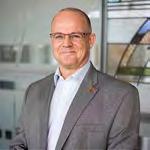
applicable to financing digital infrastructure or SaaS (software as a service) products, since infrastructure service models are shifting. The capital flowing into sustainable infrastructure often includes green bonds, sustainability-linked bonds or debt, blockchain-based investments. Investors expect sustainability disclosures vetted by third parties, which influence the pricing of debt and investment yields.
The input parameters for these models include sustainable performance metrics, financial risk and return expectations and operational costs. The latter can be reduced through automation. Financial returns and risks vary depending on the type of capital invested, and this involves technical details like the use of assetbacked securities for data contracts, insurance options to stabilize revenue and swaps to improve credit risks.
Q: What unique career opportunities are emerging at the intersection of finance and civil engineering, especially for graduates with an MEng in Smart Infrastructure Finance?
A: There are many emerging career opportunities for graduates with an MEng in Smart Infrastructure Finance. Our graduates are finding roles in organizations like MSCI, which build sustainability indexes for infrastructure, and NGOs providing third-party opinions on infrastructure sustainability. Firms like KPMG and BCG are hiring our students for their infrastructure finance advisory groups, valuing the blend of engineering and finance skills over traditional MBAs. Investment banks such as Citi, Barclays and Goldman Sachs have employed our students in their analytics groups, particularly in fixed income divisions. Students with additional coding skills are being hired by digital infrastructure providers and blockchain companies.
A civil and environmental engineering background combined with a solid understanding of financial principles creates opportunities in new employment sectors, including renewable energy finance, real estate investment trusts and digital infrastructure management. This skill set accelerates career progression, often bypassing years of on-the-job experience typically required in these fields, or allows for pivoting towards asset management and investment jobs typically reserved for MBAs.
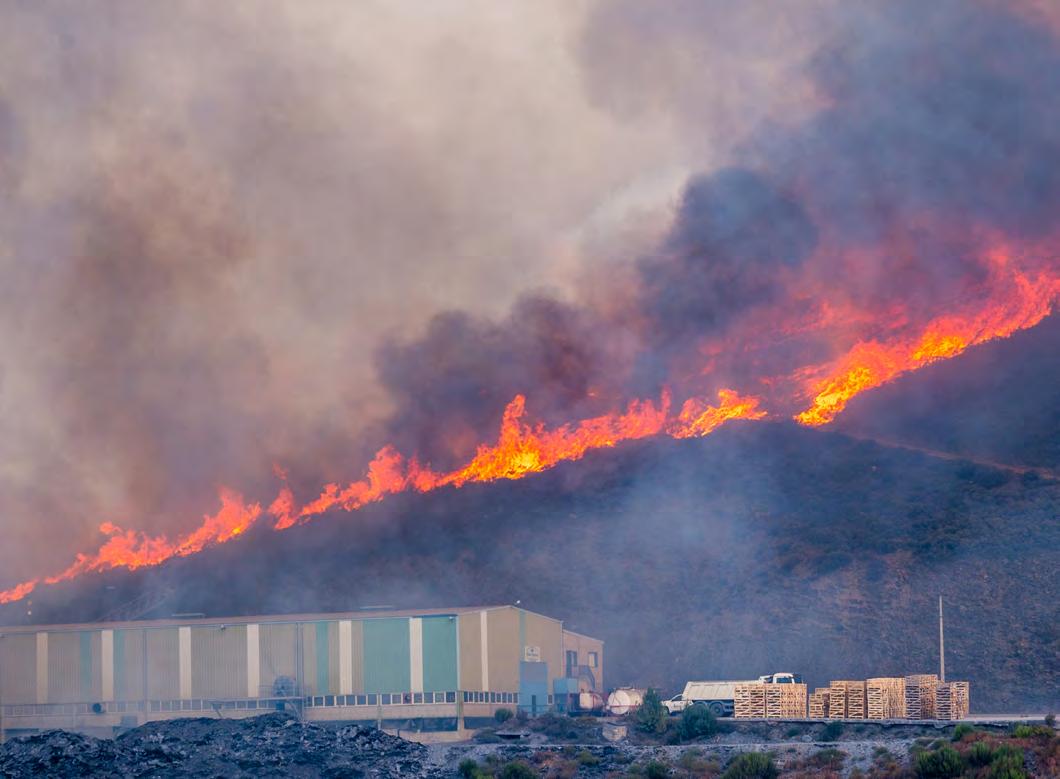
U-M CEE is excited to announce a new specialization program called Hazards, Risk and Resilience. Initially starting as a graduate-level program, this specialization is for graduate students striving to influence how we understand and manage disasters and their effects on infrastructure and communities.
The new specialization is built around a comprehensive suite of five core courses, each designed to tackle different aspects of analyzing disaster risk and vulnerability. One of the standout courses focuses on disaster impact assessment, guiding students from quantifying where and why hazards occur through to their eventual impact on the built environment and human populations.
A key feature of this program is its emphasis on both teaching and research. In addition to coursework, students will have the opportunity to embark on doctoral-level research, contributing new insights to the field of hazards and resilience.
U-M CEE is known for its strong
capabilities in hurricanes, landslides, earthquakes, flooding and fire hazards. This new specialization leverages that strength, giving students a solid grounding in the underlying mechanics of hazards while introducing them to advanced concepts in risk assessment and management, such as probability and spatial analytics.
With climate change increasingly affecting how we live, the program arrives at a pivotal moment. Companies from sectors such as insurance, startups, nonprofits and government agencies are actively seeking individuals with a nuanced understanding of risk. This program is crafted to meet that demand, preparing students not only for today’s challenges but for the evolving landscape of risks we will face in the future.
Importantly, the curriculum also addresses social vulnerability and environmental justice issues, ensuring that students are prepared to consider diverse perspectives and needs when planning and responding to disasters.
The program not only serves current
U-M CEE students, but also aims to attract a broader demographic. Students with backgrounds in urban planning, geography, environmental studies and beyond might find this specialization particularly relevant to their interests and career aspirations.
Looking ahead, the Hazards, Risk and Resilience specialization is set to stand out as a unique contribution to the world of civil and environmental engineering education. U-M CEE’s commitment to equipping students with critical, demand-driven skills means that graduates will be well-prepared to help society navigate and reduce risks associated with natural hazards.
With the solid backing of expert faculty, a well-thought-out curriculum and the promise of cutting-edge research, the U-M CEE’s new specialization is poised to make waves in the field and help shape a more resilient future.
If you are a student curious about this specialization, please express your interest by scanning the QR code above.
U-M CEE researchers are developing innovative solutions to enhance worker safety in labor-intensive industries. Led by Professor SangHyun Lee and PhD candidate Leyang Wen, the research focuses on preventing injuries such as joint pain and tendonitis caused by awkward postures and forceful exertion during manual labor.
This research builds on a decade of work in sensorless ergonomic risk assessment based on 2D pose estimation technology, initially developed in Professor Lee’s lab and commercialized by his startup, Kinetica Labs, in 2017. The technology has been widely adopted in thousands of facilities to improve worker safety.
In 2021, VelocityEHS acquired Kinetica Labs and sponsored a $2 million, fiveyear project (2021-2026) to expand these ergonomic solutions. This initiative includes advancements like video-based hand grip identification, video-based root cause analysis and ergonomic solution generation only with photos.
“While our initial sensorless ergonomic risk assessment marked a significant advancement in worker safety, there were often limitations concerning the accuracy of ergonomic assessments when a camera view angle does not give clear line of sight because it is based on 2D pose estimation technology,” said Professor
Lee. “Our current research working with VelocityEHS’ machine learning team strives to overcome these limitations by developing a single camera-based 3D human body model that provides a more precise analysis of workers’ postures.”
Defining the right data and its collection is a key part of the project. The team defined key points that are meaningful to measure body joint angles truly needed for ergonomic risk assessment and uses a motion capture chamber to record participants performing various manual tasks correctly and incorrectly. This data helps simulate real-world conditions contributing to Work-related Musculoskeletal Disorders (WMSDs). The goal is to train neural networks to accurately infer 3D positions of workers’ joints to develop a new computing pipeline for 3D pose estimation.
“Collecting accurate and meaningful data for ergonomics is crucial for training our neural networks,” noted Professor Lee. “By utilizing motion capture technology, we can create a comprehensive dataset focused on ergonomic-specific body angles. This level of detail is essential for offering precise ergonomic risk assessment and further biomechanical analyses.”
A significant advancement is the development of a comprehensive dataset focused on ergonomic-specific body angles, enabling real-time feedback on worker posture. This attempts to correct improper postures and reduce injury risks. “This unique dataset allows us to develop a 3D human pose estimation model to be used for accurate biomechanical analyses and to improve the overall effectiveness of our vision-based ergonomic solutions,” explained PhD candidate Leyang Wen.
The system is not designed to replace human assessments entirely, but tries to provide continuous monitoring and timely feedback, reducing the need for
periodic ergonomic audits. This 3D analysis technology has been integrated into mobile applications, allowing workers and their peers/supervisors to capture images or videos, analyze their posture in real-time, and receive immediate corrective feedback.
“Ultimately, we aim to make it easier for workers and companies to maintain high ergonomic standards without needing frequent human intervention,” added Professor Lee. “The technology we’re developing can be deployed through ordinary cameras, including those on smartphones, making it accessible and practical for various industries.”
The research also involves estimating forces and calculating biomechanical stresses on the body through video analysis. Such capabilities could revolutionize how industrial ergonomics are managed, providing detailed insights without intrusive sensors.
“Estimating the forces and stresses acting on different parts of the body over time is a significant step forward,” said Professor Lee. “This allows us to conduct a biomechanical analysis and guide ergonomic interventions more effectively without attaching any sensors to the workers.”
The importance of this research is underscored by the prevalence of non-fatal, chronic injuries among manual workers, particularly musculoskeletal disorders. By analyzing data on when and where these injuries occur, this technology can offer targeted coaching to correct unsafe practices, fostering safer working conditions.
“As we continue to enhance our technology, the ultimate goal is to provide actionable insights that can drastically reduce the incidence of workplace injuries,” concluded Professor Lee. “The collaboration with VelocityEHS provides us with the resources and access to the industry’s most accomplished team of certified professional ergonomists needed to make this vision a reality.”


STORY BY JIM LYNCH
An air curtain shooting down from the brim of a hard hat can prevent 99.8% of aerosols from reaching a worker’s face. The technology, created by University of Michigan startup Taza Aya, potentially offers a new protection option for workers in industries where respiratory disease transmission is a concern.
Independent, third-party testing of Taza Aya‘s device showed the effectiveness of the air curtain, curved to encircle the face, coming from nozzles at the hat’s brim. But for the air curtain to effectively protect against pathogens in the room, it must first be cleansed of pathogens itself. Previous research by a group led by Herek Clack, U-M Associate Professor of Civil & Environmental Engineering and co-founder of Taza Aya, showed that their method can remove and kill 99% of airborne viruses in farm and laboratory settings.
“Our air curtain technology is precisely designed to protect wearers from airborne infectious pathogens, using treated air as a barrier in which any pathogens present have been inactivated so that they are no longer able to infect you if you breathe them in,” Clack said. “It’s virtually unheard of—our level of protection against airborne germs, especially when combined with the improved ergonomics it also provides.”
Watch the research video

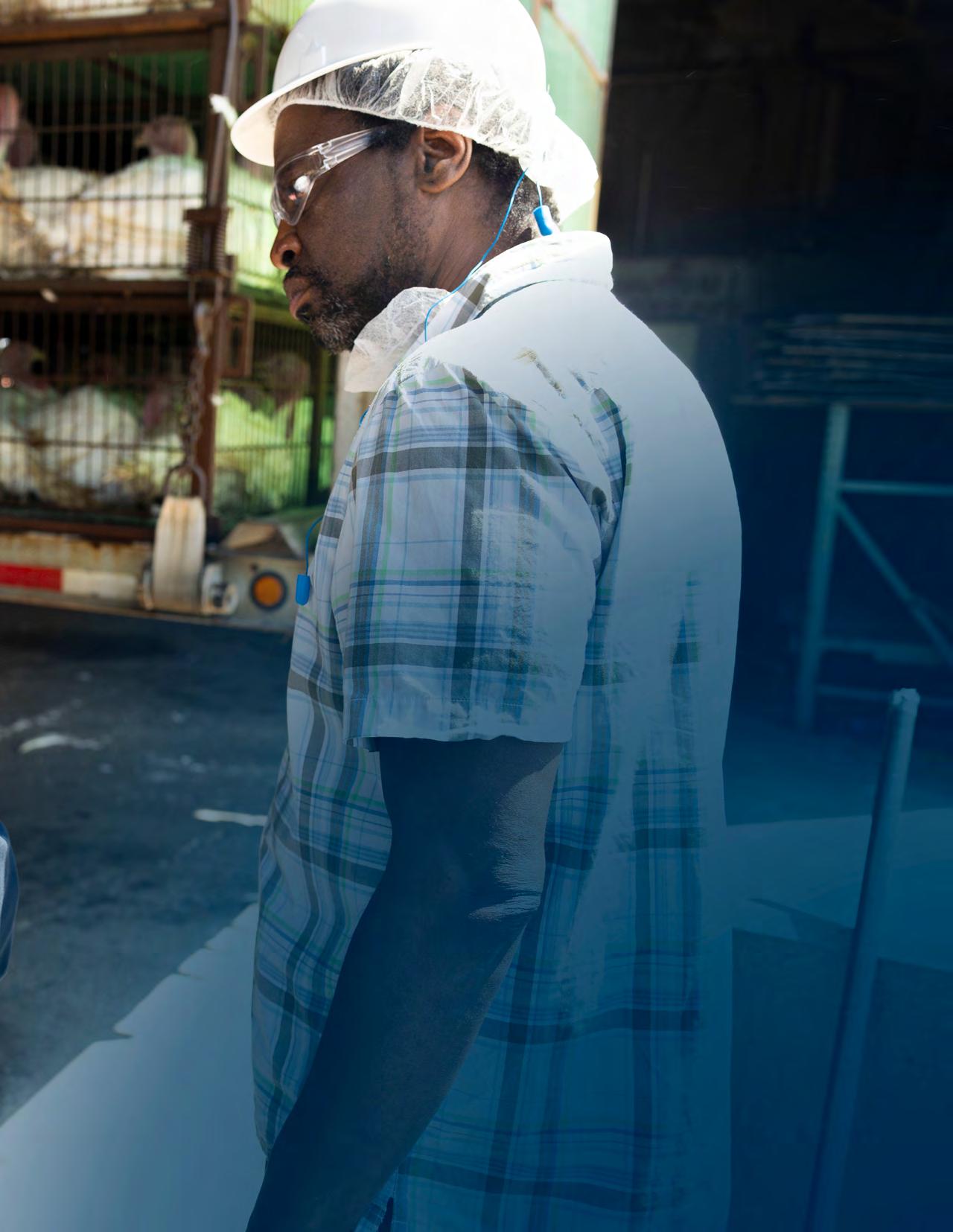
It’s virtually unheard of—our level of protection against airborne germs, especially when combined with the improved ergonomics it also provides.”
-Herek Clack, U-M Associate Professor of Civil & Environmental Engineering and Taza Aya co-founder
Fire has been used throughout history for sterilization, and while we might not usually think of fire this way, it’s what’s known as a thermal plasma. Nonthermal, or cold, plasmas are made of highly energetic, electrically charged molecules and molecular fragments that achieve a similar effect without the heat. Those ions and molecules stabilize quickly, becoming ordinary air before reaching the curtain nozzles.
Taza Aya’s prototype features a backpack, weighing roughly 10 pounds, that houses the nonthermal plasma module, air handler, electronics and the unit’s battery pack. The handler draws air into the module, where it’s treated before flowing to the air curtain’s nozzle array.
Taza Aya’s progress comes in the wake of the COVID-19 pandemic and in the midst of a summer when the U.S. Centers for Disease Control and Prevention have reported four cases of humans testing positive for bird flu. During the pandemic, agriculture suffered disruptions in meat production due to shortages in labor, which had a direct impact on prices, the availability of some products and the extended supply chain.
In recent months, Taza Aya has conducted user experience testing with workers at Michigan Turkey Producers in Wyoming, Michigan, a processing plant that practices the humane handling of birds. The plant is home to hundreds of workers, many of them coming into direct contact with turkeys during their work day.
To date, paper masks have been the main strategy for protecting employees in such large-scale agriculture productions. But on a noisy production line, where many workers speak English as a second language, masks further reduce the ability of workers to communicate by muffling voices and hiding facial clues.
“During COVID, it was a problem for many plants—the masks were needed, but they prevented good communication with our associates,” said Tina Conklin, Michigan Turkey’s vice president of technical services.
In addition, the effectiveness of masks is reliant on a tight seal over the mouth and nose to ensure proper filtration, which can change minute to minute during a workday. Masks can also fog up safety goggles, and they have to be removed for workers to eat. Taza Aya’s technology avoids all of those problems.
During COVID, it was a problem for many plants— the masks were needed, but they prevented good communication with our associates.”
As a researcher at U-M, Clack spent years exploring the use of nonthermal plasma to protect livestock. With the arrival of COVID-19 in early 2020, he quickly pivoted to how the technology might be used for personal protection from airborne pathogens.
In October of that year, Taza Aya was named an awardee in the Invisible Shield QuickFire Challenge—a competition created by Johnson & Johnson Innovation
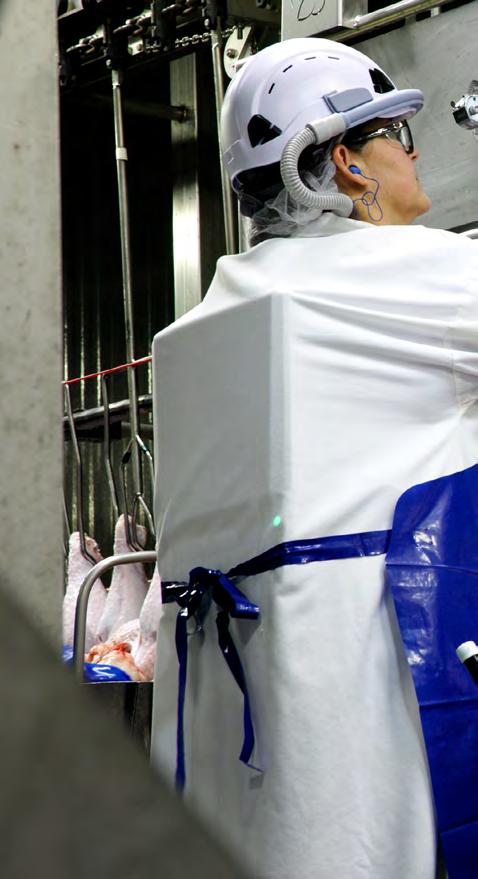
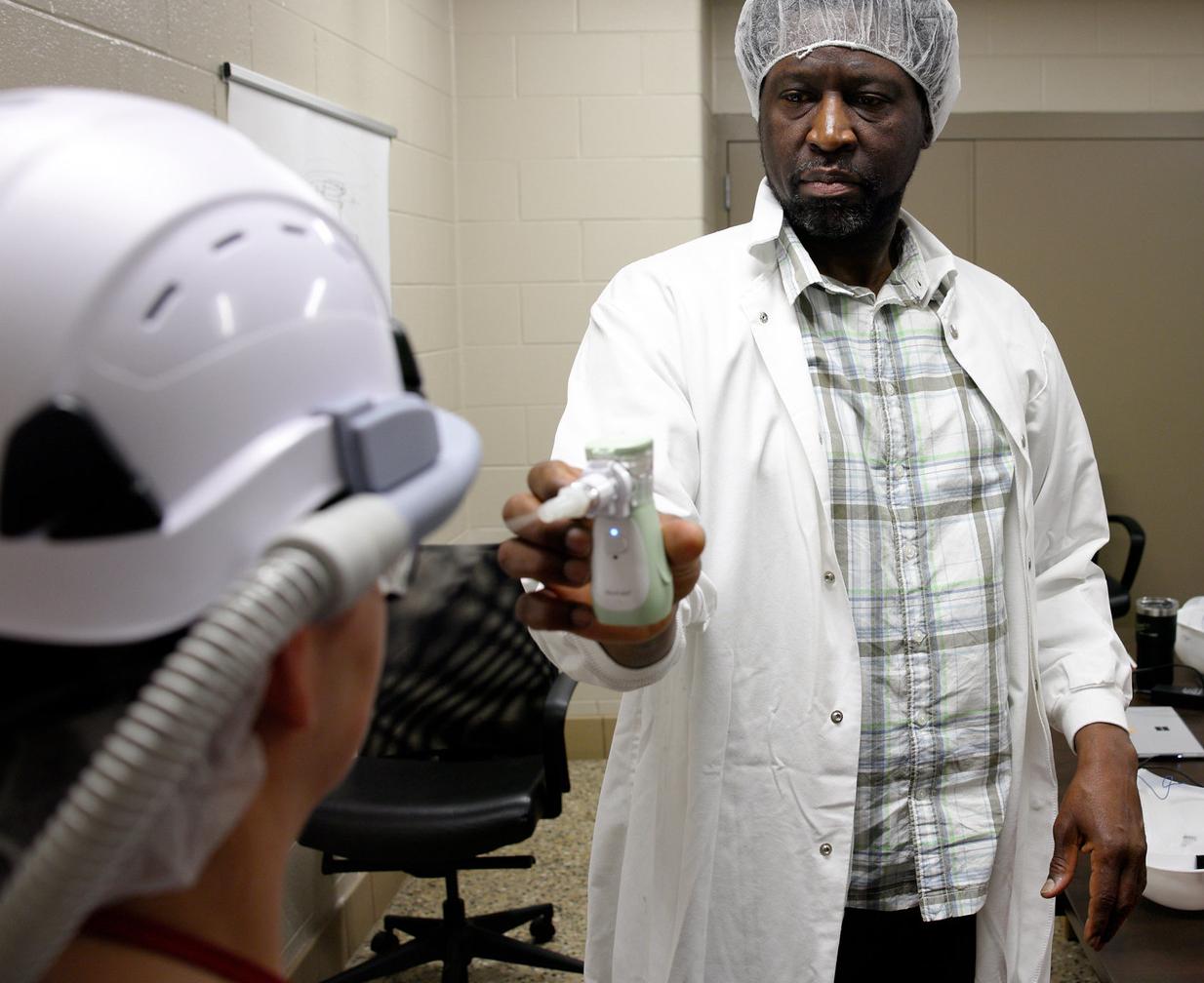
A Michigan Turkey Producers employee works on the processing line while wearing the Worker Wearable Protection device during field testing at the Michigan Turkey Producers processing plant in Wyoming, MI

3D rendering of a Worker Wearable Protection device prototype.
in cooperation with the U.S. Department of Health and Human Services. The program sought to encourage the development of technologies that could protect people from airborne viruses while having a minimal impact on daily life.
“We are pleased with the study results as we embark on this journey,” said Alberto Elli, Taza Aya’s CEO. “This real-world product and user testing experience will help us successfully launch the Worker Wearable in 2025.”
Clack and the University of Michigan have a financial interest in Taza Aya.
STORY BY MASON HINAWI
The University of Michigan is a key partner in the newly launched NSF Center for Community Empowering Pandemic Prediction and Prevention (NSF COMPASS), backed by an $18 million National Science Foundation grant.
Krista Wigginton, U-M CEE Professor, will study how viruses persist in the environment. This research aims to develop tools to predict and prevent future pandemics.
The NSF COMPASS Center, led by Virginia Tech, brings together experts across disciplines to tackle the challenge of pandemic prediction and prevention, with U-M playing a pivotal role in its success.

STORY BY ANNABEL CURRAN

For students at CEE, learning goes beyond the classroom. Experiential learning is integral to preparing the next generation of engineers to enter the workforce, and students enrolled in CEE 537 had the opportunity to experience that hands-on learning with their class trips to active construction sites.
Students in CEE 537, “Construction of Buildings” visited two active construction sites as a part of their coursework: the College of Pharmacy building and the Kahn Health Care Pavilion.
“By observing ongoing construction operations and interacting with industry professionals during the visits, students make meaningful connections between the work occurring on site and the technical content covered in class,” said CEE 537 course instructor David Kelly.
Students first suited up in hard hats and construction vests to visit the College of Pharmacy site. After pandemic-related delays, the Board of Regents approved the revised schematic design and budget
for the College of Pharmacy building in 2022. The 142,000-square-foot building will address the college’s need for a larger, more modern space, with activelearning-style classrooms, laboratories, associated support spaces, faculty and administrative offices and student-focused areas. The project is expected to provide an average of 116 on-site construction jobs. Construction is scheduled to be completed in fall 2025.
After visiting the College of Pharmacy construction site, students visited the future D. Dan and Betty Kahn Health Care Pavilion, scheduled to open in the fall of 2025. The 12-floor, $920 million facility will include 264 private inpatient rooms, a neurosciences center and specialty cardiovascular and thoracic care services. It will also feature 20 surgical and three interventional radiology suites.
“I attended the site visit to the Kahn Health Care Pavilion and really enjoyed the opportunity to see an active project directly related to what we were learning in
class,” said Construction Engineering and Management student Jenna Bonello. “It was very valuable and interesting to see the project on-site and make connections directly back to concepts we had been introduced to in class.”
During the visits, students interacted with the site construction manager’s professional staff, asked questions, learned about the various building systems, rode the temporary exterior construction hoist to the top floor, and viewed the in-progress construction work.
“Experiential learning opportunities, such as these visits, expose students to the complexities and dynamics of a construction project that are difficult to fully grasp through traditional pedagogical methods,” said Dr. Kelly. “This bridge between classroom learning and practical application deepens their understanding of construction processes, materials, equipment and management practices.”
STORY BY MASON HINAWI
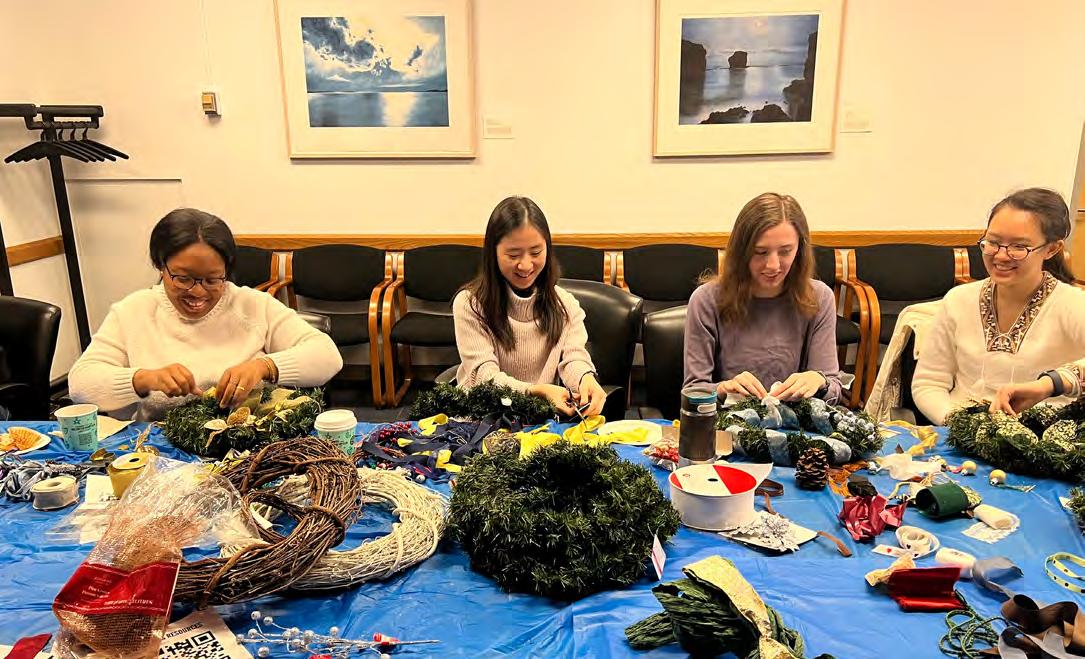
This past year, the CEE DEI Committee has been ramping up its efforts to make the community more inclusive and supportive. Here’s a look at what’s happening:
The CEE Graduate Student Peer Mentoring program, now in its fourth year, is all about connecting students and building a supportive community. The DEI Committee is working on ways to make the program more inclusive. They’re exploring new models and even considering making peer mentoring a part of the required coursework for first-year graduate students. The goal is simple: ensure every student feels they belong and have the support they need.
CEE is rethinking how civil and environmental engineering is taught, focusing on the intersection of equity and engineering. Partnering with the Center for Socially Engaged Design (C-SED), the department is developing case studies that highlight the social impacts of engineering projects. These will be used in various courses to help students understand how their work can affect different communities. Plus, the department is continuing to add
to a public database, the DEItabase, to help educators everywhere bring equity discussions into their classrooms.
The DEI Committee is working on a set of shared norms and values that reflect what the CEE community stands for. Through surveys and discussions, they’re gathering input on how these values should be practiced daily. This initiative aims to create a more respectful and cohesive environment where everyone feels they can contribute and thrive.
CEE values the work of student organizations focused on equity and inclusion. The DEI Committee has established liaisons with groups like NSBE, SHPE and SWE to support their efforts. The department’s approach is to follow the lead of these organizations and offer help where it’s most needed.
Understanding the unique challenges faced by student parents, the DEI Committee has developed resources to help them find support. This includes a dedicated page with information on childcare, healthcare and financial aid, as well as an email group for CEE parents to
share information and advice.
Celebrating Heritage and Identity: Meaningful Recognition
The department is committed to recognizing and celebrating various heritage and identity-based observances, such as Black History Month and Pride Month. These celebrations are designed to be inclusive, increase cultural awareness and inspire action beyond just recognizing the days on the calendar.
Recruiting Across All Programs: Expanding
For the first time, CEE sent representatives Jordan Marshall and Prof. Vineet Kamat to the National Society of Black Engineers (NSBE) convention. This move is part of a broader effort to recruit a more diverse group of students at all levels, from high school to graduate school.
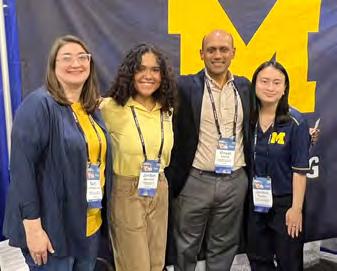
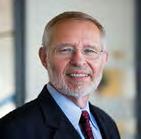
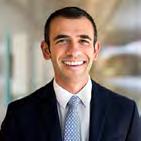
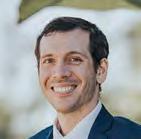


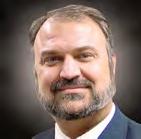

Glen Daigger
-American Chemical Society’s (ACS) Environmental Science & Technology (ES&T) Engineering Best Paper Award
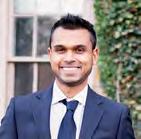
EVGUENI FILIPOV
-Extreme Mechanics Letters’ (ELM) Young Investigator Award
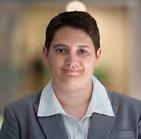
Estéfan Garcia
-75th Géotechnique Anniversary Early Career Award

Seth Guikema
-Richard J. Burk Outstanding Service Award, Society for Risk Analysis

Robert Hanson
-Earthquake Engineering Research Institute (EERI)’s George W. Housner Medal
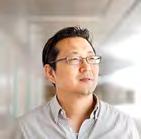
Photios Ioannou
-American Society of Civil Engineers (ASCE) Life Member

Joshua Jack
-Scialog Negative Emission Science Fellow, Alfred P. Sloan Foundation and RCSA
-ASCE ExCEED Teaching Fellow
Ann Jeffers
-Willie Hobbs Moore Award
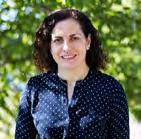

Vineet Kamat
-Provost’s Teaching Innovation Prize -Best Paper Award from the 2024 ASCE International Conference on Computing in Civil Engineering
David Kelly
-ASCE Fellow

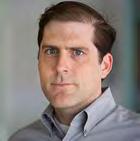
SangHyun Lee
-College of Engineering Service Excellence Award
-Brain Pool Fellow from National Research Foundation of Korea
NEDA MASOUD
-College of Engineering Vulcan Education Excellence Award
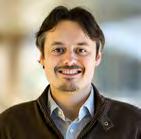
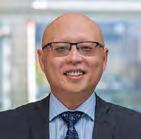
Carol Menassa
-ASCE Fellow
-Provost’s Teaching Innovation Prize
-Best Paper Award from the 2024 ASCE International Conference on Computing in Civil Engineering
Rachel O’Brien
-National Science Foundation (NSF) CAREER Award
Lutgarde Raskin
-Association of Environmental Engineering and Science Professors (AEESP) Fellow
Jeff Scruggs
-CEE Department Faculty Award
Seymour Spence
-Engineering Structures’s 2023 Best Paper of the Year Award
Yafeng Yin
-Fellow, School of Engineering, The University of Tokyo
-Matthew Karlaftis Lifetime Achievement Award, Transportation Research Part C
Professor Seth Guikema’s passion for the environment and science has shaped his career in environmental engineering and risk management. After earning a Civil and Environmental Engineering degree from Cornell, he studied at the University of Canterbury on a Fulbright scholarship and completed his master’s and Ph.D. at Stanford, focusing on fluid dynamics and Engineering Risk and Decision Analysis. Before joining the University of Michigan, he was an Associate Professor at Johns Hopkins and an Assistant Professor at Texas A&M.
Guikema, now shifting his home department from Industrial and Operations Engineering to CEE, brings a wealth of interdisciplinary experience. His work intersects risk management, civil and environmental engineering and urban planning, particularly in understanding how communities and infrastructure interact and recover after natural hazards. He is also helping to lead CEE’s new Hazards, Risk and Resilience Program, where he will advise students and teach core graduate courses.
As he deepens his involvement with CEE, Guikema is excited to mentor the next generation of civil and environmental engineers, proud of the successes his students have achieved.
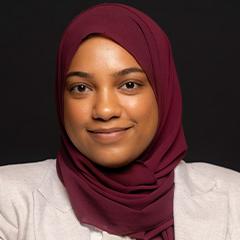


Incoming Assistant Professor Rabab Haider joins us from the Georgia Institute of Technology’s School of Industrial and Systems Engineering and the NSF Artificial Intelligence Research Institute for Advances in Optimization where she was a Postdoctoral Fellow. As a dedicated power systems researcher, Haider’s work stands at the intersection of energy systems, sustainability and advanced technologies, to design future energy systems that provide clean, reliable, and affordable energy for all. Her work has involved developing methods in physics-informed machine learning and distributed intelligence for grid-edge devices; designing future electricity markets; and energy equity in networked infrastructure.
At Georgia Tech’s Artificial Intelligence Institute for Optimization (AI4OPT), Haider worked to develop new methods at the intersection of AI and optimization, with applications to energy infrastructure systems. Haider has had several journal publications: Notable publications include a paper on a project-driven DER dataset for the US grid in collaboration with Microsoft Research and Breakthrough Energy, as well as a proposal for the application of a physics-informed neural networks to network topology reconfiguration of power systems.
Haider was previously named an MIT Energy Fellow, a MathWorks-MIT Mechanical Engineering Fellow and was a recipient of the Hansen Fellowship. She received her B.S. in Engineering Science from the University of Toronto and her M.S. and Ph.D. in Mechanical Engineering from the Massachusetts Institute of Technology. In recognition of her research and contributions to sustainability, she has been awarded the Raj V Tahil Fellowship Fund Award and the Aarav Amar Bajpayee Memorial Prize.
Incoming Assistant Professor Jiaqi Li comes to the University of Michigan from his position as a Staff Scientist at the Lawrence Livermore National Laboratory (LLNL). He earned his B.Eng in Civil Engineering in 2014 from Beijing University of Technology and completed his M.S. and Ph.D. in Civil and Environmental Engineering at the University of California, Berkeley. Before joining LLNL, he was a postdoctoral scholar in the Department of Civil and Environmental Engineering both at UC Berkeley, studying nanomechanical properties of cement, and at the Chemical Sciences Division at the Lawrence Berkeley National Laboratory, studying microalgae biomineralization. Li’s research centers around energy conversion and geochemistry in industrial wastes and how renewable energy converts massive wastes into value-added products for climate change mitigation, clean fuels and infrastructure materials. His interest is to create and develop game-changing materials and systems for sustainable and scalable geochemical energy cycles that help reach net zero emissions and a circular carbon economy. Through his own experimental approach, he aims to provide solutions to the capture of air CO2, mitigation of ocean acidification and production of carbon-negative fuels and cement at giga-ton scale. Li has authored or co-authored over 50 peer-reviewed journal publications and was named among the top 2% of cited scientists worldwide by Stanford University and Elsevier as of 2024. He was previously the Ernest O. Lawerence Fellow at LLNL and a recipient of Early Career Recognition Award at LLNL, Atkinson Postdoc Fellowship at Cornell University and Roy Carlson, Milos Polivka & Arthur Ross Fellowship at Berkeley.
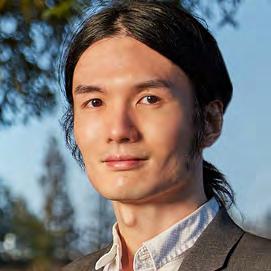
Stories by Mason Hinawi & Annabel Curran
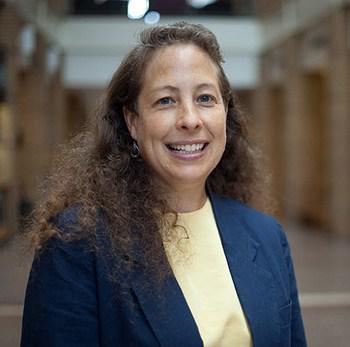
Pat Brainard , a longtime CEE staff member, has been awarded the 12th annual Distinguished Diversity Leaders Award, thanks to nominations from her colleagues, including Yafeng Yin and Stephanie Ford. Established in 2008, this award recognizes staff who promote a welcoming, inclusive environment. Pat’s efforts in diversity, equity and inclusion (DEI) since joining U-M in 2005, and CEE in 2008, include creating DEI roles and managing the Pelham Scholars program for underrepresented students. With numerous awards to her name, Pat’s tireless dedication to DEI initiatives is widely admired. Congratulations to Pat for her exceptional service and commitment.

The U-M College of Engineering (CoE) will honor three exceptional staff members from U-M CEE through the 2024 Staff Incentive Awards. Recognized for their commitment and professionalism, the awardees are Matt Blank, Sherry Brueger and Tom Yavaraski
Matt Blank, the Student Services Manager, has shown unwavering dedication since 2008, particularly excelling during our ABET Accreditation Reviews. Sherry Brueger, with over 15 years at CEE, has significantly contributed as an administrative and HR assistant. Tom Yavaraski, Manager of the EWRE laboratories since 1989, is celebrated for his vast expertise in research projects and lab management.
These awards highlight their tremendous contributions and set a motivating example for the future.
Mark Kleersnyder was the 2024 CEE Staff Excellence Award recipient. This award, which includes a $1000 stipend, recognizes his exemplary performance, collaboration and organization. Mark successfully completed over 370 IT tickets this year, set up AV equipment, Zoom Rooms and transitioned everyone to softphones. He processed more than 70 outdated computers, replaced all construction lab computers, standardized workstations, represented CEE in the AI Cohort and set up Skedda software for hot desks.
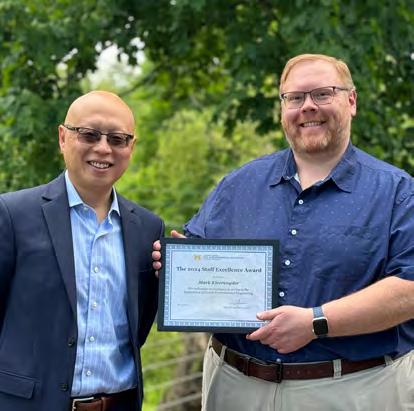
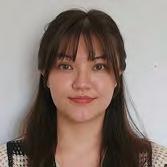
Shania Allen
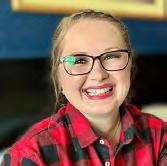

Shania acts as the primary point of contact for Student Services within CEE. She also provides both undergraduate and graduate student support and helps with event planning within the department. Her responsibilities include answering inquiries, arranging campus tours, reserving rooms and various other administrative duties. She graduated from U-M with a dual degree in Communication & Media and Asian Studies where her focus was on Korean Studies. In her free time, she enjoys reading and exploring local coffee shops.
Hannah is one of the research specialist technicians in the Eisenberg/Wigginton lab working on wastewater monitoring epidemiology. She came from the core lab of Michigan Medicine where she performed chemistry testing on patient samples. She received a BS in Biomedical, Cellular, and Molecular Biology in 2020 from Central Michigan University and enjoys reading and nature walks in her spare time.
Jackie’s role touches multiple aspects of student services. Primarily focused on graduate student support, she will provide critical support to students at key milestones, including but not limited to, advancement to candidacy and GSI appointments. Throughout the academic year, she will assist with managing academic records, organizing orientations and other events and ensure compliance with departmental and university policies. She will also field inquiries from prospective students, participate in recruitment efforts and contribute to the graduate and DEI committees. With a dedication to enhancing the graduate experience, she aims to foster a supportive and inclusive environment for all students. She is very family oriented, so she enjoys spending quality time with her baby nephew and niece.

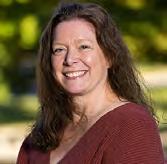
Tobias assists with the structures lab and mixing lab processes for CEE. From assisting with research for grad students to fabrication of scaled projects and general maintenance of testing machines. He comes from U of M Dearborn MSEL staff with 14 years experience in prototype fabrication with welding and other building materials. He enjoys playing instruments, recording and spending time with his cat Pico.
Jennifer is the Financial & HR Specialist at CEE. She strives to assist in any way she can with new temp hires, reporting, timekeeping and purchasing. Jennifer came from the Stamps School of Art & Design. In her freetime she enjoys cooking, canning, camping and spending time with family and friends.

Kwesi Amegah — Civil Engineering BSE
Ethan Ansted— Civil Engineering BSE
Abigail Atwood — Environmental Engineering BSE
Edgar Becerra — Civil Engineering BSE
Grant Bluthardt — Civil Engineering BSE
Miles Bollman — Civil Engineering BSE
Sara Bolzman — Environmental Engineering BSE
Jenna Bonello — Civil Engineering BSE
Mackenna Burkholder — Civil Engineering BSE
Jaylen Campbell — Civil Engineering BSE
How Nam Chung — Civil Engineering BSE
Morgan Comfort — Environmental Engineering BSE
Kailee Conley — Civil Engineering BSE
Sophie Cronk — Environmental Engineering BSE
Madeline-Rose Czajka — Civil Engineering BSE
Jackson Danner — Environmental Engineering BSE
Jared Davis-Sims — Civil Engineering BSE
Travis Ekstrom — Environmental Engineering BSE
Garrett Everitt — Civil Engineering BSE
Anna Gossard — Environmental Engineering BSE
Dylan Gottheim — Civil Engineering BSE
Drew Gourlay — Civil Engineering BSE
Daniel Ha — Environmental Engineering BSE
Rita Halphen — Civil Engineering BSE
Macy Hannan — Environmental Engineering BSE
Chase Hartley — Civil Engineering BSE
Andrew Hendrie — Civil Engineering BSE
Ryan Herster — Civil Engineering BSE
Mary Hess — Environmental Engineering BSE
Leina Kaehr — Civil Engineering BSE
Joseph Kanny — Civil Engineering BSE
Max Karnik — Environmental Engineering BSE
Vivian Kim —Civil Engineering BSE
Margaret Kirby — Civil Engineering BSE
Patricia Lee — Civil Engineering BSE
Kaming Leung — Environmental Engineering BSE
Yingjun Li — Civil Engineering BSE
Olivia Mayleben — Civil Engineering BSE
Riley McKenna — Environmental Engineering BSE
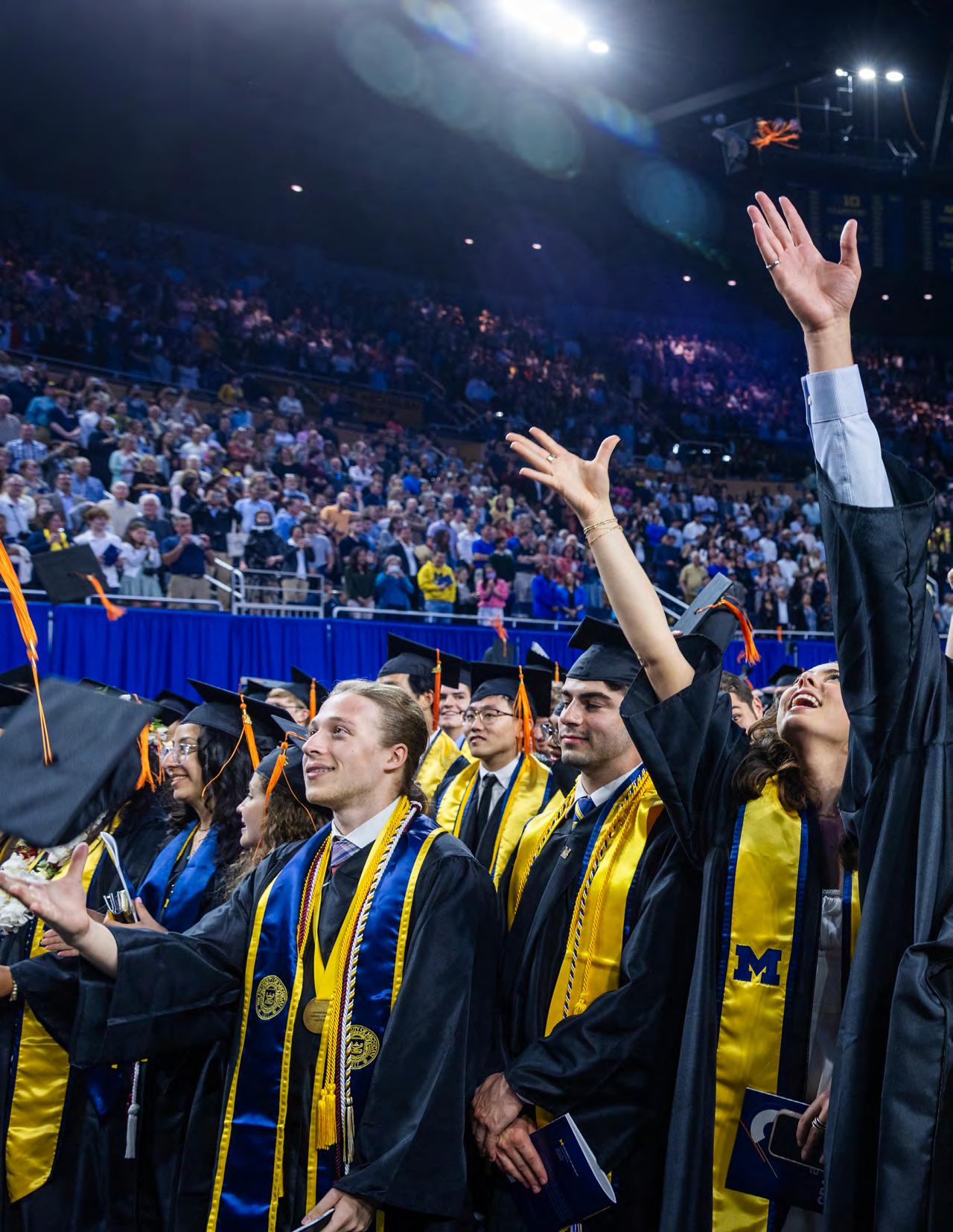

Leonard Meade III — Civil Engineering BSE
Vanessa Molano — Environmental Engineering BSE
Wanxuan Ming — Environmental Engineering BSE
Ghassaq Nassir — Civil Engineering BSE
Michael Novak — Civil Engineering BSE
Julien Nyberg — Environmental Engineering BSE
Karina Otten — Civil Engineering BSE
Aldo Pando Girard — Civil Engineering BSE
Julia Pyle — Civil Engineering BSE
Zihua Qian — Civil Engineering BSE
Hailey Raak — Civil Engineering BSE
Ellen Ramsey — Environmental Engineering BSE
Kristy Reagan — Environmental Engineering BSE
Nishanth Reddy — Civil Engineering BSE
Emma Remien — Civil Engineering BSE
Brian Rund — Civil Engineering BSE
Joseph Ryan — Civil Engineering BSE
Nicholas Said — Civil Engineering BSE
Westin Sakamoto — Civil Engineering BSE
Carter Sandstrom — Civil Engineering BSE
Morgan Saunders — Environmental Engineering BSE
Alicia Schmidt — Environmental Engineering BSE
Andrew Schweers — Environmental Engineering BSE
Catherine Shirilla — Environmental Engineering BSE
Stephanie Sparkowski — Civil Engineering BSE
Bria Stocker — Environmental Engineering BSE
Xanthe Thomas — Environmental Engineering BSE
Alliyiah Torrey — Environmental Engineering BSE
Aaron Von Bargen — Civil Engineering BSE
Izabella Wentzell — Environmental Engineering BSE
Cindy Wheaton — Civil Engineering BSE
Ryan Williams — Environmental Engineering BSE
Ian Wingate — Civil Engineering BSE
Ryan Wollaston — Civil Engineering BSE
Judy Yang — Civil Engineering BSE
Brian Yeung — Environmental Engineering BSE
Chengtao Zhang — Civil Engineering BSE
Ethan Zurek — Civil Engineering BSE


Mohamed Aboelnaga — Construction Eng & Mgt MSE
Ibrahiem Ali — Civil Engineering MSE
Erik Anderson II — Environmental Engineering MSE
Srinivasan Arunachalam — Civil Engineering PhD
Justin Avila — Construction Eng & Mgt MSE
Juhyeon Bae — Civil Engineering PhD
Abhishek Bagul — Construction Eng & Mgt MSE
Sotramony Bun — Structural Eng & Construction Eng & Mgt MEng
David Burby — Civil Engineering MSE
Scott Carlin — Environmental Engineering MSE
Sirui Chen — Civil Engineering MSE
Matthew Cotton — Structural Engineering MEng
Lily Craighead — Civil Engineering MSE
Preston Dahlen — Environmental Engineering MSE
Xinyu Dang — Structural Engineering MEng
Devki Desai — Civil Engineering PhD
Gabriel Draughon — Civil Engineering PhD
Eric Dubbert — Civil Engineering MSE
Maia Gallagher — Civil Eng, Environ & Sustainability MS
Ruisen Gao — Civil Engineering MSE
Jiayuan Ge — Environmental Engineering MSE
Bensen Gu — Civil Engineering MSE
Daniel Gulino — Structural Engineering MEng
Yuang Guo — Environmental Engineering MSE
Isis Hang — Structural Engineering MEng
Jacob Harris — Civil Engineering MSE
Qiyao He — Construction Eng & Mgt MSE
Ethan Hiss — Construction Eng & Mgt MSE
Qinan Hu — Construction Eng & Mgt MEng
Chenwei Huang — Civil Engineering MSE
Qifan Huang — Construction Eng & Mgt MEng
Khushi Shital Jain — Construction Eng & Mgt MSE
Emma Johnson — Civil Engineering MSE
Kaylin Jones — Environmental Engineering PhD
Katherine Kazmer — Environmental Engineering PhD
Anna Kilts — Environmental Engineering MSE
Gina Kittleson — Civil Engineering MSE
Sterling Knight — Environmental Engineering MSE
Alex Kovacs — Civil Engineering MSE
Chang Li — Construction Eng & Mgt MSE
Dan Li — Civil Engineering PhD
Lucinda Li — Environmental Engineering PhD
Yi-Ju Lien — Environmental Engineering MSE
Paixun Lin — Civil Engineering MSE
Reece Lynch — Environmental Engineering MSE
Joseph Majchrzak — Construction Eng & Mgt MEng
Julien Malherbe — Environmental Engineering MSE
Jose Marquez — Structural Engineering MEng
Ernesto Federico Martinez Paz — Environmental Engineering PhD

Robert Marx — Civil Eng MSE & Construction Eng & Mgt MEng
Saarah Maxon — Environmental Engineering MSE
Brody Medhi — Structural Engineering MEng
Devin Neale — Structural Engineering MEng
Rosalia Otaduy-Ramirez — Environmental Engineering MSE
Somin Park — Civil Engineering PhD
Rachel Pastori — Environmental Engineering MSE
Purvaja Jitendra Patil — Construction Eng & Mgt MSE
Arnulfo Pelayo — Environmental Engineering MSE
Bozhidara Prokopieva — Civil Engineering MSE
Tianrun Qin — Civil Engineering MSE
Rajmohan Namachivayam — Construction Eng & Mgt MSE
Achyuth Dev Ramalingapura Devkumar — Construction Eng & Mgt MSE
Dhruv Singh Rawat — Civil Engineering MSE
Johnathan Roberts — Civil Engineering MSE
Seth Sandoval-Skeet — Environmental Engineering MSE
Santiago Sanjurjo — Civil Engineering MSE
Musawer Ahmad Saqif — Civil Engineering PhD
Julia Schachinger — Environmental Engineering MSE
Jacquelyn Schmidt — Civil Engineering PhD
Xiangyu Shi — Civil Engineering MSE
Nicholas Flinders Parsaulian Sirait — Civil Engineering MSE
Chenyang Song — Civil Engineering MSE
Tanapat Sudhiwana — Structural Engineering MEng
Haowei Sun — Civil Engineering PhD
Alexander Sundt — Civil Engineering PhD
Zhengye Tang — Civil Engineering MSE
Ellen Thompson — Environmental Engineering PhD
Mingyan Tian — Environmental Engineering PhD
Mohammed Uzair — Environmental Engineering MSE
Alexander Vandeweghe — Environmental Engineering MSE
Olivia Voskuil — Civil Engineering MSE
Pauline Wang — Civil Engineering MSE
Tina Wang — Structural Engineering MEng
Caleb Wegener — Civil Engineering MSE
Muhammad Iqbal Wiratama — Civil Engineering MSE
Mingxu Xie — Civil Engineering MSE
Paige Yamane — Construction Eng & Mgt MSE
Xintao Yan — Civil Engineering PhD
Yushi Yasuda — Civil Engineering MSE
Carston Yaw — Civil Engineering MSE
Zihan Ye — Environmental Eng MSE
Hongrui Yu — Civil Engineering PhD
Ruicong Zhang — Civil Engineering MSE
Yiqi Zhang — Civil Engineering MSE
Yuyang Zhao — Civil Engineering MSE
Tianhao Zhu — Environmental Engineering MSE

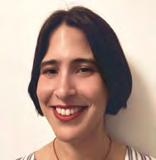

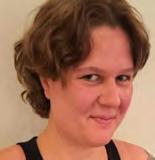

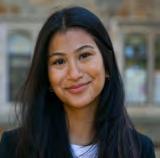
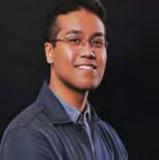
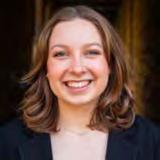
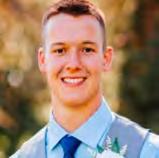
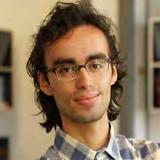
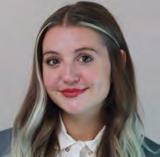


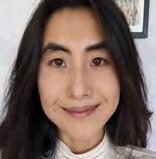



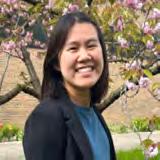
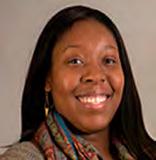

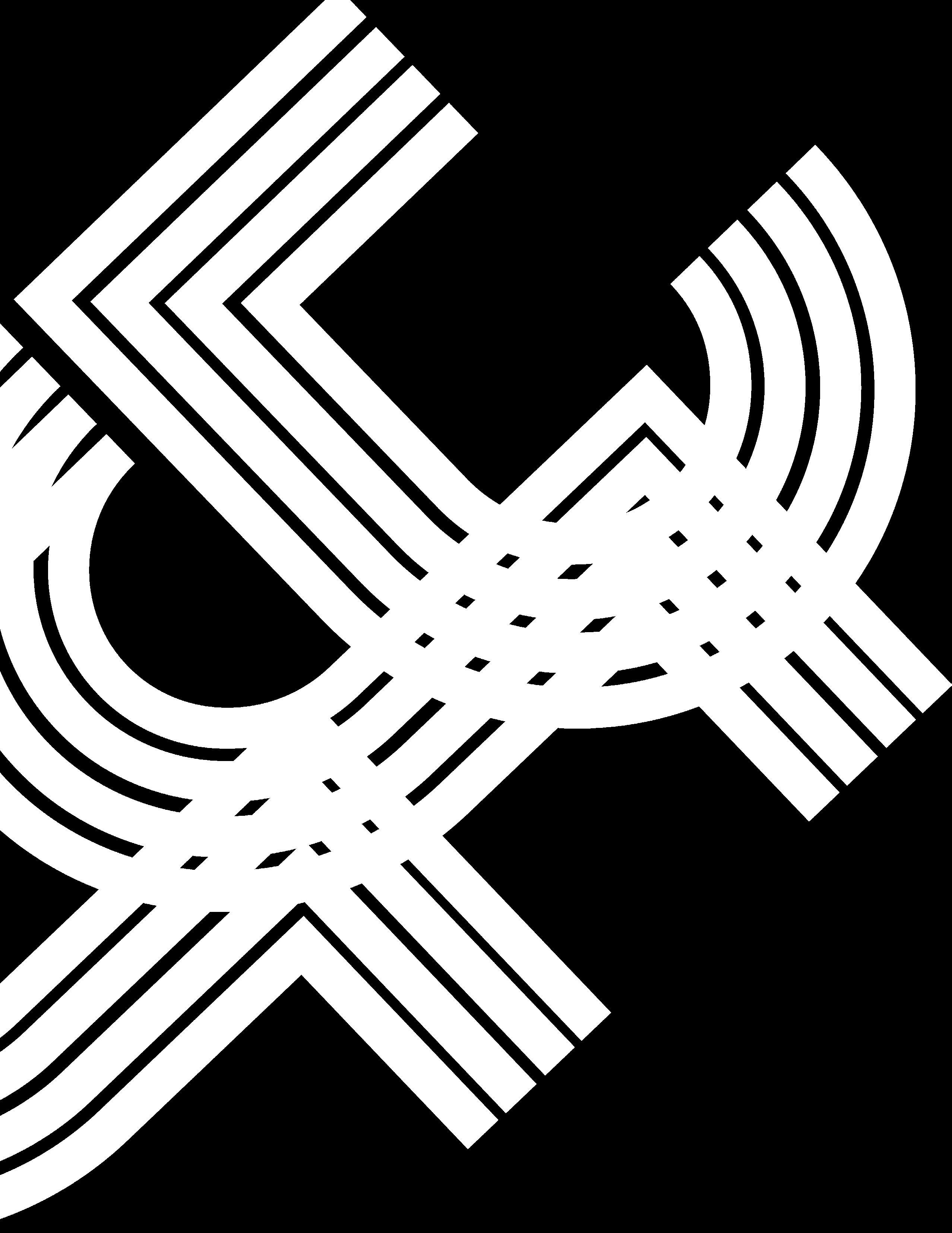
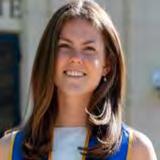
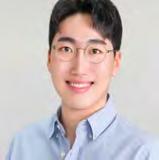
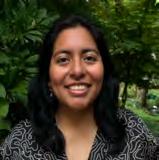

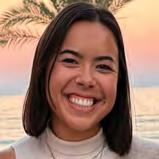
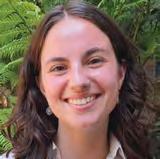





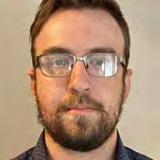


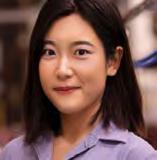
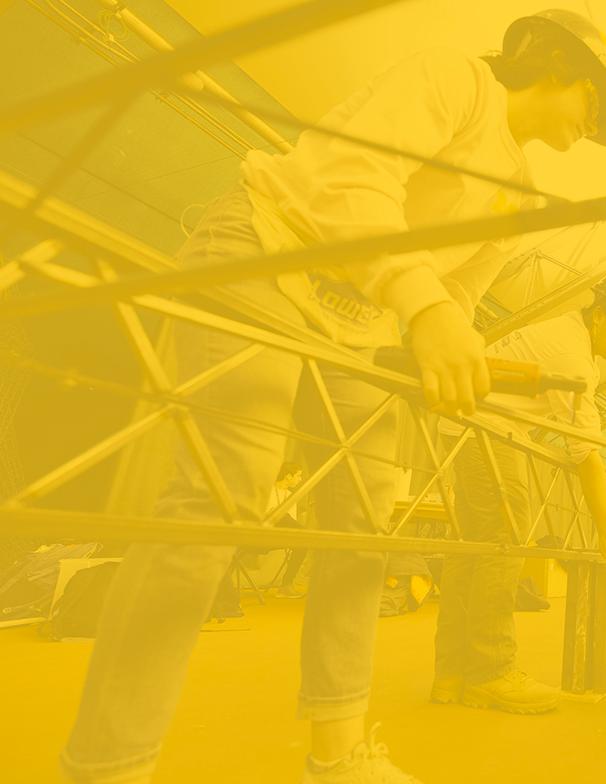
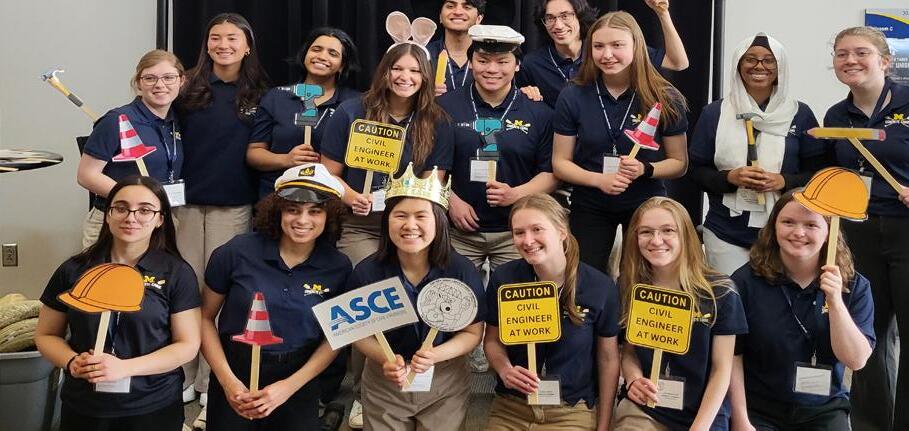
The ASCE Student Chapter had a great year with a healthy mix of social, professional and volunteer events. Networking opportunities were abundant as we had 16 companies present at our weekly speaker series and 40 companies attended our fall career fair, co-produced by MiTSO and the ECRC. We hosted the Young Members Group of SE Michigan ASCE for a resume workshop and returned to Chicago for our annual trip in April. In Chicago, we toured offices, took an architectural riverboat tour and enjoyed a banquet reception to connect with local alumni. Throughout the year, we volunteered time at local parks, hosted a coffee truck and held bowling and trampoline park socials. In the coming school year, we hope to deepen partnerships with other CEE student orgs in planning events, promote underclassmen involvement and increase consistent attendance among our members.

We continued to host our popular Free Bagel Fridays every month (Fall 2023 and Winter 2024) and coordinated the CEE 5K this past Spring 2024 at the Nichols Arboretum. We also helped coordinate networking lunches with CEE 880 seminar speakers in Winter 2024, and hosted the first EWRE grad student social event downtown. This year we plan to do more social events and more networking sessions with seminar guests, in addition to continuing our beloved Free Bagel Fridays and CEE 5K!

We continued our mission of sustainability and community engagement in the Amazon and Pantanal regions of Brazil. We designed and tested our Eco-Incinerator, which achieved high temperatures and air filtration to mitigate the negative effects of open pit trash burning and reduce the inhalation of harmful byproducts. After successfully reaching 500°C during our prototype testing, we reconstructed our design in Brazil to which we made many alterations as a result of the new testing environment. During our trip, we also installed solar panels for an eco-tourism lodge and two local schools. We were accompanied by U-M storytellers who put our trip/mission into both writing and video form in the article “Watt a Journey” (scan QR code). Back at school, we continued our tradition of Churrascos (Brazilian barbeques), fun social events and our Portuguese lessons!
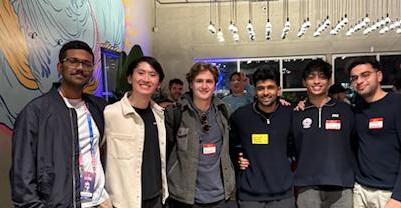
Michigan Blockchain had a tremendous first year of operation since its merger with the largest blockchain clubs on campus. With almost 60 new members in our ranks, we are gearing up for another great semester. This past year, our club has grown our governance delegations, consulted with protocols like Avalanche and Injective and has grown our newly established investment portfolio by about 60%. In addition, we’ve sponsored students to attend conferences like ETH Chicago and ETH Denver. We hosted hackathons and events at Michigan such as The Graph Hackathon in which over $1,500 in prizes were distributed. We are now preparing for the biggest blockchain event Michigan has ever seen this November. We’ll be hosting the first ever Midwest Collegiate Blockchain Conference this fall and are inviting industry leaders from across the blockchain ecosystem to provide insight into the industry and career opportunities for students.
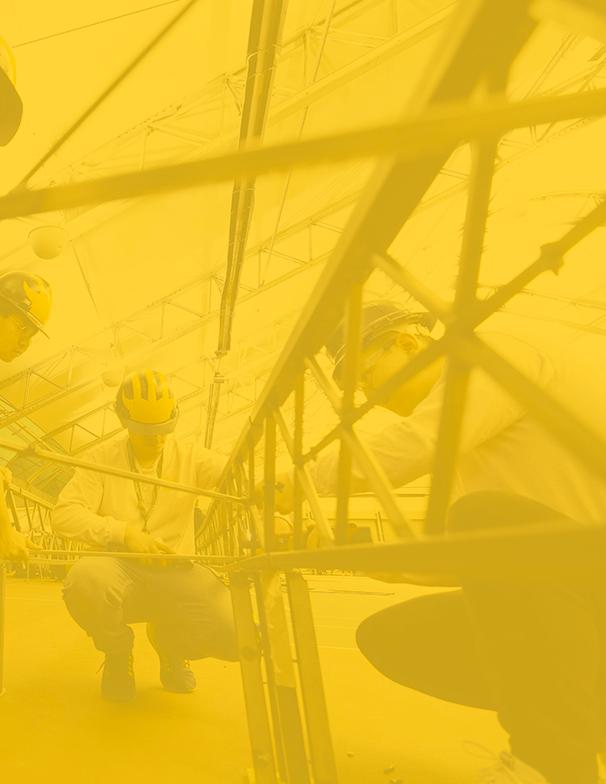
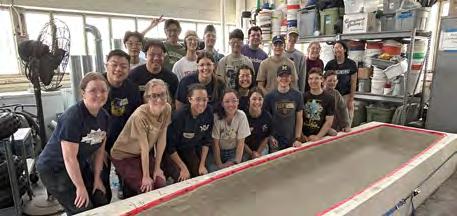
This year, the Michigan Concrete Canoe Team, learning from past challenges, boldly pursued innovative solutions. Our commitment to push boundaries paid off when we attended competition in Akron, Ohio at the University of Akron. We won 1st place in Project Proposal and 2nd place overall with our train-themed canoe, affectionately named ‘Locoboative.’ We participated in various outreach opportunities such as presenting to CEE 200, Northfest and Winterfest. This year, we revamped our manufacturing strategy by switching from a male to a female mold which significantly reduced demolding times. The change resulted in substantial benefits and streamlined our production process. Furthermore, we developed a new software tool to analyze the structural integrity of potential hull forms, which optimized the hull design process. On the team-building front, we had many paddling events and BBQs, an Annual Rules Social to learn all the new rules of the competition and an annual paper plate social where we awarded each other after a great season!

We continued our streak of competing in the ASCE’s Student Steel Bridge Competition. We spent almost two semesters designing, fabricating and constructing a 1:10 scale steel bridge in preparation for the 2024 Eastern Great Lakes regional competition. This year, the regional competition took place in Akron, Ohio at the University of Akron. We competed against thirteen other teams, and took home a total of five awards, placing third overall. This placement earned us a spot at the 2024 Student Steel Bridge National Finals at Louisiana Tech University, where we were awarded second place for the Aesthetics category. Members of our team got experience using structural analysis and 3D modeling softwares during the design process of our bridge and built skills such as welding, manual milling and laser cutting during the fabrication process. We made extensive use of the facilities and training programs offered by the Wilson Student Team Project Center. Steel Bridge also participated in several outreach and recruitment events including Northfest, Society of Women Engineers, presentations in CEE 200 and recruiting at the Civil Engineering Open House. We plan to successfully compete in the 2025 Eastern Great Lakes Regional Competition and continue to build our team and skills for future years.
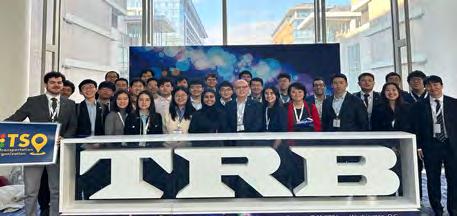
As the central hub for U-M students studying transportation, we have offered a diverse range of events and opportunities throughout the 2023-24 academic year. We inaugurated the Next Generation Transportation Systems (NGTS) Student-Faculty Gathering, drawing together over 50 students, faculty and staff to create a vibrant community atmosphere. We also proudly supported a record-breaking cohort of 21 students to participate in the 2024 Transportation Research Board (TRB) Annual Meeting, the premier conference for transportation professionals and academics. Additionally, our Institute of Transportation Engineers (ITE) student chapter expanded its presence by hosting 15 events such as Lunch and Learn sessions, coffee-chat gatherings and field trips to Mcity and Ann Arbor’s Traffic Management Center. Our students showcased their talents in competitive arenas, engaging in competitions like the USDOT/NOCoE Transportation Technology Tournament and the ITE Traffic Bowl.

Chi Epsilon is a great organization to be involved in as a Civil or Environmental Engineer. Our org is a community of faculty, students and alumni who provide networking, academic and professional engineering support. Our chapter inducted 21 new members during the 2023-2024 academic year. We also installed a new faculty advisor, Professor Sabine Loos. We are so excited to have her on board! Our members learned about construction practices, accessible transportation and natural disaster analytics. Our goal for the Fall 2024 semester is to increase the involvement of our active members to create a deeper sense of community in the Civil & Environmental Engineering (CEE) Department. We also want to focus our speaker series and events on sustainable engineering topics to emphasize our commitment to the CEE strategic vision. The executive board is very eager and excited to meet these goals and to ensure a fantastic Chi Epsilon experience for both our current and prospective members!

BY PAT WINGATE
Dear CEE Alumni, Students and Friends,
Fall means more Michigan football, fall means changing colors, yes, fall represents change. Change continues to define our modern world and modern society. Whether adaptation, variation or transformation, these elements are significant for all of us focused on civil engineering or leveraging our CEE education. Aspects of civil engineering have been around for centuries with some elements, even in practice longer. Modern aspects of civil engineering and how we integrate with other disciplines, continue to transform and race forward at breakneck speed. For all of us in the practice of engineering, we can observe this change in various forms and, to different extents, all around us. Another aspect of change for us personally and
professionally is how we interact with one another, our peers, other professionals and even friends and family we socialize with. We see change in our University as well, as we welcome our newly installed CoE Dean, Karen Thole.
When I went back to school nearly 25 years ago, it was for business not engineering. That was a big choice and a change from what my technical focus had been. In business school, one of the instructors told us presentday professionals will need “continuous learning on a scale never seen before.” Someone in a classroom immediately challenged that, to which the instructor promptly pointed to us in the room. Point proven. Business school taught me different elements and new lenses to look beyond what engineering school and my professional life had shown me so far. That instruction, that aspect of new knowledge and opening my mind in different directions served me well then and serves me well now. Whatever your path is professionally and personally, a key element of growth will always be additional education and knowledge that is in tune with others and society. That alignment comes not just from education, but from continuous collaboration. This means listening, accepting different opinions and looking at problems through different perspectives.
Back in undergrad studies at Michigan, we were taught to look at the whole problem, to leverage our resources, our intellect and to work with others. This
is still what makes us adept and our new graduates strong. Some of the ways we interact and collaborate may have changed, but some of the key tenants of looking beyond yourself and looking at problems from different viewpoints remain timeless. We will only truly solve some of our biggest challenges if we really understand how those issues affect all humankind.
I invite you to review our quarterly CEE newsletter, the CEE website, our alumni/CEEFA page, and the Michigan CEE strategic plan. A key focus for your CEEFA board and our CEE department remains how we can find opportunities for alumni to contribute and engage with the department and our students. This may mean opportunities to donate time, talent or treasure. We are also striving to review the ways our alumni receive information on our CEE department and how alumni can connect if you have ideas or thoughts. Please don’t hesitate to share your thoughts with the CEEFA Board or CEE department. We are continuing to develop options that involve alumni engagement, volunteering, visiting and activities such as the CEE tailgate are always encouraged!
Go Blue!!
Pat Wingate Vice President – OHM Advisors CEEFA Board President
STORY BY ANNABEL CURRAN
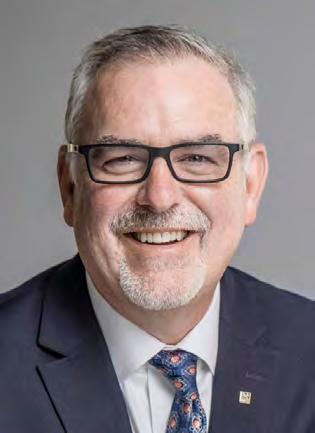
This year, U-M CEE proudly presents the 2024 Alumni Merit Award to alumnus John Hiltz. The award recognizes our alumni whose actions and achievements inspire U-M CEE students to embody the motto “leaders and best.” Alumni
Merit Award recipients must exhibit a deep passion for improving both their own communities and the world — a characteristic that Hiltz has shown to possess in spades.
As Executive Director, former Chairman of the Board and former President at OHM Advisors, Hiltz dedicated himself to transforming the architecture, engineering and planning firm from a Michigan-based engineering business to a twenty-office Community Advancement firm that serves an array of public and private communities across five states. Hiltz has long been passionate about and committed to engineering and infrastructure improvements, innovation and investment. During his time with OHM Advisors, Hiltz and his partners were integral in 5 years of planning the State’s first Diverging Diamond Interchange.
“It was a very impactful project to the City of Auburn Hills and State”, said Hiltz of the Diverging Diamond Interchange. “Since then, other DDI interchanges have been built in the state of Michigan. Bringing it forward and working closely with the city and the DOT was really a labor of love.”
To further support community, he is the current president of the Livonia Community Foundation, served on the Plymouth Road Development Authority (PRDA) for 19 years and is a past president of ACEC Michigan.
While originally beginning his time at U-M as a mechanical engineering student, Hiltz would eventually make the switch to civil engineering to pursue a construction management path, a decision that was much more aligned with his passions.
“It was perfect for me,” Hiltz said. “Light switches turned on in my brain, and things started to really take a turn for me.”
Hiltz credits his CEE professors with having a large impact on his academic and engineering career, mentioning Professors Glysson, Webber and Carr as influential figures. “There were so many influential professors, and I think back fondly of all of them,” said Hiltz.
Over the years, Hiltz has maintained a strong connection with U-M and CEE, bringing meaningful contributions to the department through his continued engagement. Hiltz served on the CEEFA Board for 6 years, followed by another 7 years with the Michigan Engineering Alumni Board (MEAB), acting as the department’s liaison to the MEAB throughout that time.
One of Hiltz’s most memorable and impactful contributions to CEE was his role in securing funding for the CEE Pelham Scholars Program, a department scholarship and mentorship program that provides full tuition to master’s students for two terms. Through his position at OHM Advisors, the firm became one of the first significant partners and donors to the program, providing support to students traditionally underrepresented in the profession.
“Diversity is very important to our organization,” Hiltz said. “I’m proud that OHM is so well-connected with the University of Michigan and the CEE department. Our goals and vision are very closely aligned.”
Reflecting back on his CEE experience, Hiltz would advise students today to take their time with their academic and engineering journey. “Don’t be in a big hurry,” he said. “Focus your attention on the right things, and the rest will follow. Your career is long — take your time and do it right.”

This year, U-M CEE alumnus Chris Cook was selected as the winner of the 2024 Michigan Engineering Michigander Award. A highly selective recognition, the award is a testament to the alumnus’ exceptional contributions and dedication to the field of engineering. Cook, a 1987 CEE graduate, has served in an incredibly wide variety of engineering positions, from project engineer to company President and CEO. Throughout his dynamic career with increasing responsibilities, Cook’s time at U-M CEE was fundamental in helping him to develop the necessary skills to succeed.
“In addition to the technical skills you learn in class, U-M fosters a strong work ethic,” Cook said. “You’re
there with the best and brightest. You learn from your peers. You learn from your professors. You learn the value of teamwork. U-M cements a work ethic that serves you well forever.”
Cook’s interest in civil engineering began at CEE as he explored different engineering disciplines. His experiences in classes and disciplines such as hydrology and structural engineering helped to solidify his career ambitions and interest in the civil engineering field all while making him feel at home in the department.
“Civil engineering classes, with the small class sizes and smaller project groups, were very valuable for me and did a great job of making a large university feel very small and comfortable,” Cook said. “The accessibility and encouragement from professors was instrumental in successfully completing the challenging curriculum. The level of individual attention that you get is not expected from such a large university. That’s really helpful.”
Following his graduation from U-M CEE, Cook began working as a civil engineer for consulting firm Wade Trim, where he worked for five years. After taking a brief break from engineering to work with his father at his heating and cooling business back home in Benton Harbor, Michigan, Cook then went on to work at civil engineering consulting firm Abonmarche. Starting as a project manager, Cook moved up the ranks to Michigan Regional President and then President/CEO of the firm, which now serves clients from 11 offices in Michigan and Indiana. Now, he serves as President Emeritus of the firm, a position that allows him to continue his focus on communitybased work. As Abonmarche’s President Emeritus, he has served as Berrien County Road Department Director and the Managing Director of Harbor Shores Community Redevelopment.
“I enjoy being able to give back to the community,” said Cook of the many volunteer roles he has held during his career. He has been a school
board member for the past 15 years and currently serves as Treasurer. He has also been a Planning Commission Chairman, Zoning Board of Appeals member, President of the Michigan Section of the American Council of Engineering Companies (ACEC) and has been a long-standing board member of Cornerstone Alliance, a local economic development organization. His volunteer efforts earned him the ACEC National Community Service Award in 2011. He also earned the Southwest Michigan Exemplary Business Leader Award. Since becoming Abonmarche President Emeritus, Cook said “I’m still involved in many things and they are keeping me engaged, happy and challenged.
Cook’s current role as Harbor Shores Community Redevelopment Director is one of his proudest achievements. The community revitalization project has led to the physical and economic transformation of Benton Harbor and Southwest Michigan. Harbor Shores is the result of remediation of over 500 acres of polluted, blighted property. It is now a top 100 Jack Nicklaus Signature golf course and residential development.
“I’m proud of the fact that this project is going strong and that I was a part of the original visionary team for it over 15 years ago,” Cook said. “I have been able to see it from inception all the way through to today, and that’s been very rewarding. It’s all happening right here in my hometown, too. So I’m able to see and experience the fruits of that labor every day.”
On behalf of CEE, congratulations to Chris Cook for receiving the 2024 Engineering Michigander Award. We thank him for his many contributions to the CEE field and community.
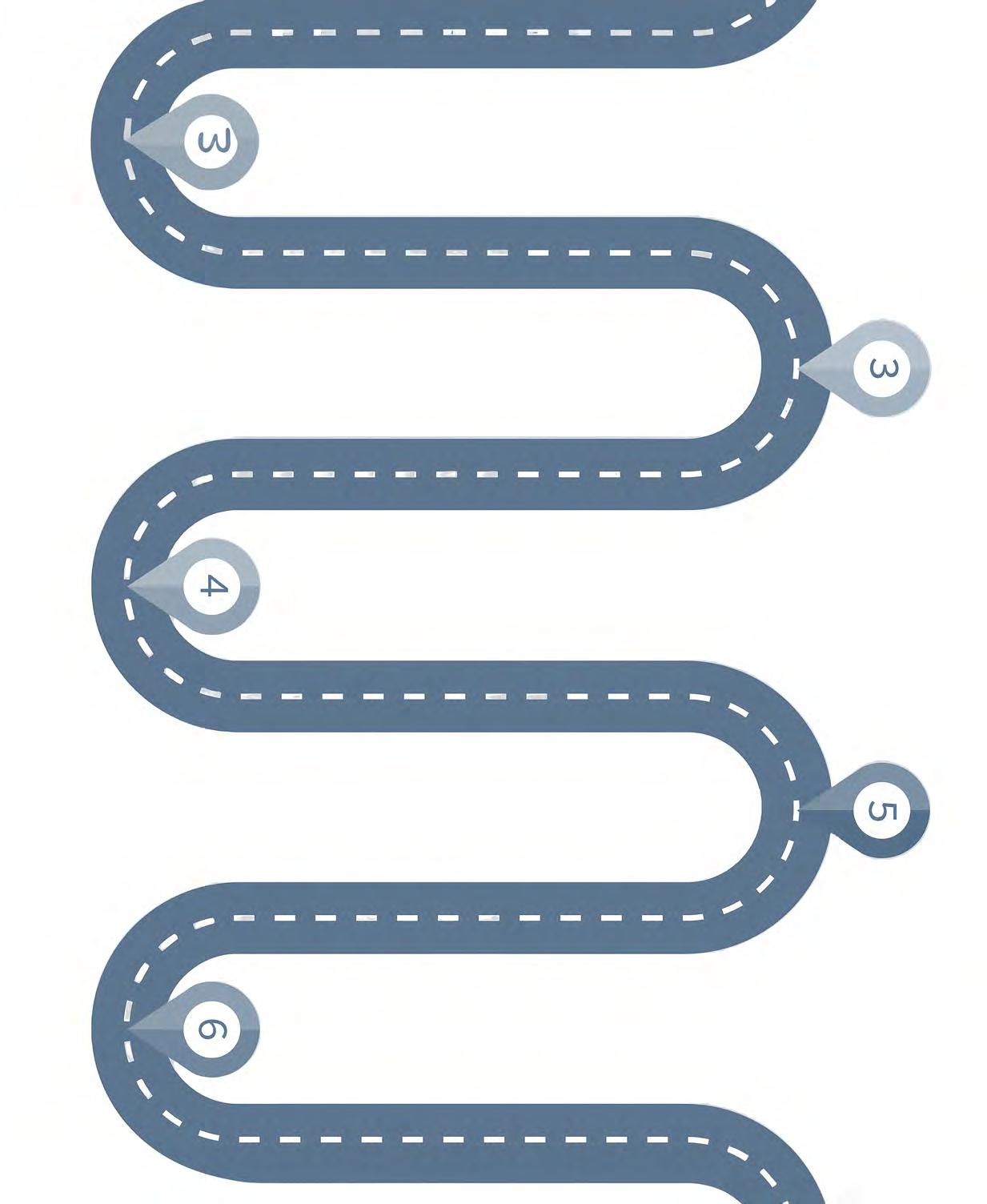
Share your experience and knowledge with the next generation of engineers as a mentor or a featured speaker to student groups, courses and recruiting panels. Volunteer your time with CEE student groups who are pursuing their love of engineering outside of the classroom.
Consider targeting your philanthropy directly to CEE in advancing the pillars of excellence through education, research and developing engineers as positive contributors to society.
STAY CONNECTED & INFORMED
Keep an eye on your inbox for our quarterly newsletter that will continue to keep you updated on events and opportunities throughout CEE.
LEARN MORE
Visit the CEE Alumni page at: https://cee.engin.umich. edu/about/alumni/ or scan the QR code to learn more about Alumni Opportunities
Contact us directly @ cee-alumni@umich.edu
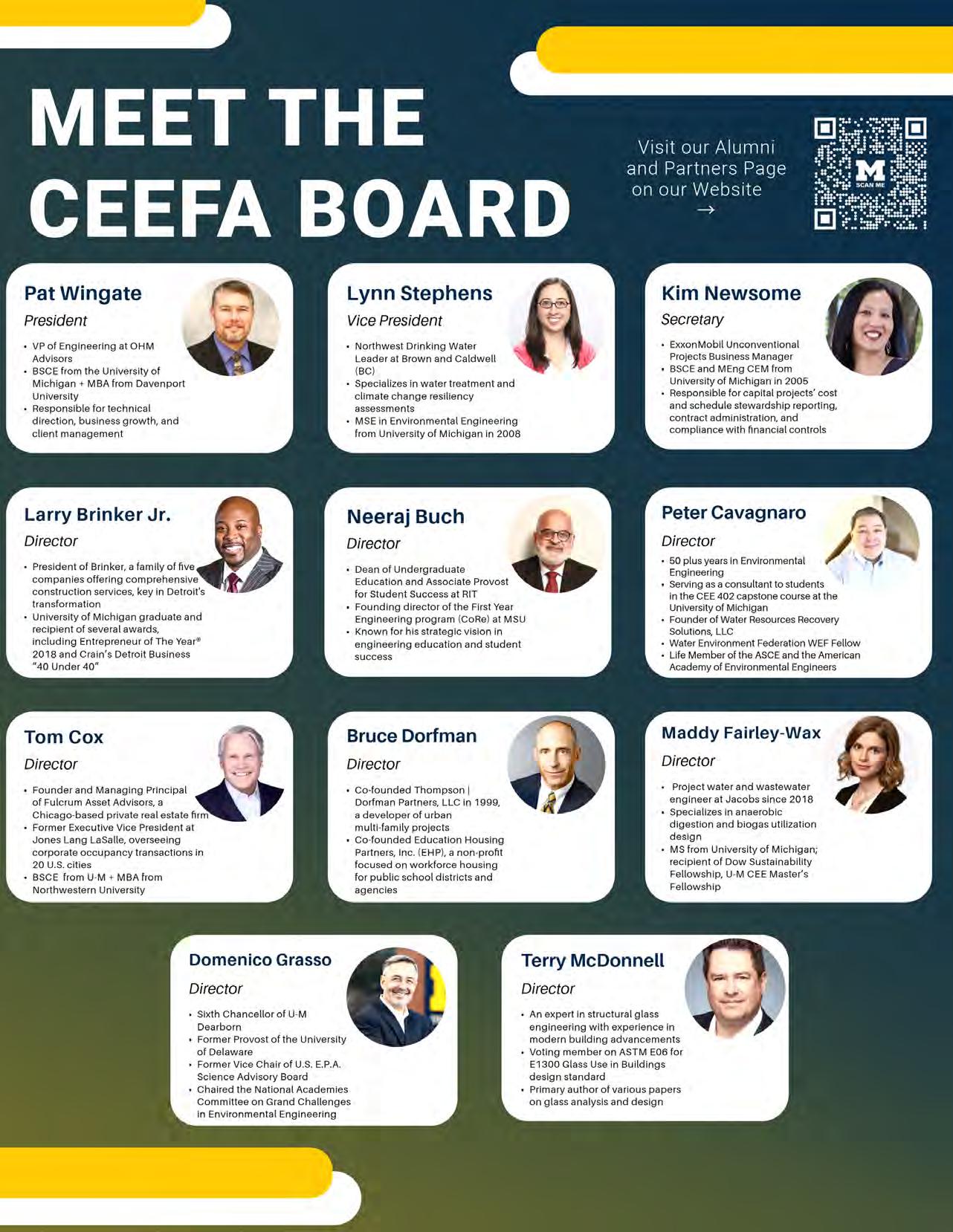
In order by year of graduation

William W. Swenson BSE ‘43 10/09/2023
Bruce M. Davidson BSE ‘49 08/13/2024
Walter D. Hancook BSE ‘50 11/07/2023
Charles M. Burt BSE ‘50 01/04/2017
Benjamin Dansard BSE ‘50 10/31/2023
George M. Levin BSE ‘50 10/31/2023
Vural Uygur MSE ‘51
03/04/2024
Charles F. Towar BSE ‘51 05/30/2024
Paul G. Ganzenhuber BSE ‘54 05/02/2024
James S. Baker
BSE ‘56, MPA ‘61 01/09/2024
John L. Hornbach BSE ‘56 03/11/2024
Leonard W. Williams
BSE ‘56 09/05/2023
Gerald A. Koenigshof BSE ‘58
11/08/2023
Frank W. Macsay MSE ‘58 01/17/2024
Donald L. Knapp BSE ‘58
08/21/2024
Joseph Litvin BSE ‘58
07/22/2024
Hansraj G. Ashar MSE ‘58 10/06/2023
Edward K. Downing MSE ‘59
07/11/2022
Ronald H. LaBerge MSE ‘59
04/02/2024
Omar K. Helferich MSE ‘59
03/28/2024
Carl J. Sobie BSE ‘61 05/27/2024
Mark A. Roller MSE ‘61 05/16/2024
Anthony A. Cabose BSE ‘63 09/19/2023
Thomas M. Keinath BSE ‘63, MSE ‘64, Ph.D ‘68 03/15/2024
James B. Groff
MSE ‘63 07/31/2024
Robert W. Hankes
BSE ‘67 MSE ‘67 07/10/2024
William T. Magee BSE ‘68 06/10/2024
Sherif S. Afifi
MSE ‘67, PhD ‘70 02/10/2023
David C. Bollech BSE ‘69 03/16/2024
James E. Koons BSE ‘68, MSE ‘69 12/13/2023
Ronald L. Potter BSE ‘71 02/11/2024
Duncan S. Hughes MSE ‘74 03/21/2024
Charles B. Waugh BSE 1975 08/02/2024
Allan L. Moyle MSE ‘76 11/06/2023
Marilynn Edwards-Young BSE ‘76 06/13/2024
Michael E. Johnson MSE ‘79 11/15/2023
David B. Vincent BSE ‘80 12/23/2023
James Cherven BSE ‘93 02/16/2024
Harold O. Firster BSECE ‘99 01/13/2023



In 1895, Marion Sarah Parker became the first woman to earn a Bachelor of Science in Civil Engineering from the University of Michigan. She went on to work as a structural engineer on iconic New York City buildings such as the Waldorf-Astoria Hotel, the Broadway Exchange and the Flatiron Building.
We are grateful for your continued generosity and support of our Civil & Environmental Engineering Chair’s Strategic Discretionary Fund. This fund is used in a variety of ways and may provide emergency financial support for students, help pay for building renovations and upgrades or support the important work of our faculty. Thank you in advance for your consideration.
To donate online, please use the link or the QR code above. Link: https://donate.umich.edu/ M8dVd
via check can be mailed to the following: Check payable to: “University of Michigan” Memo line: “Gift to CEE Chair’s Strategic Discretionary Fund” Mail to: